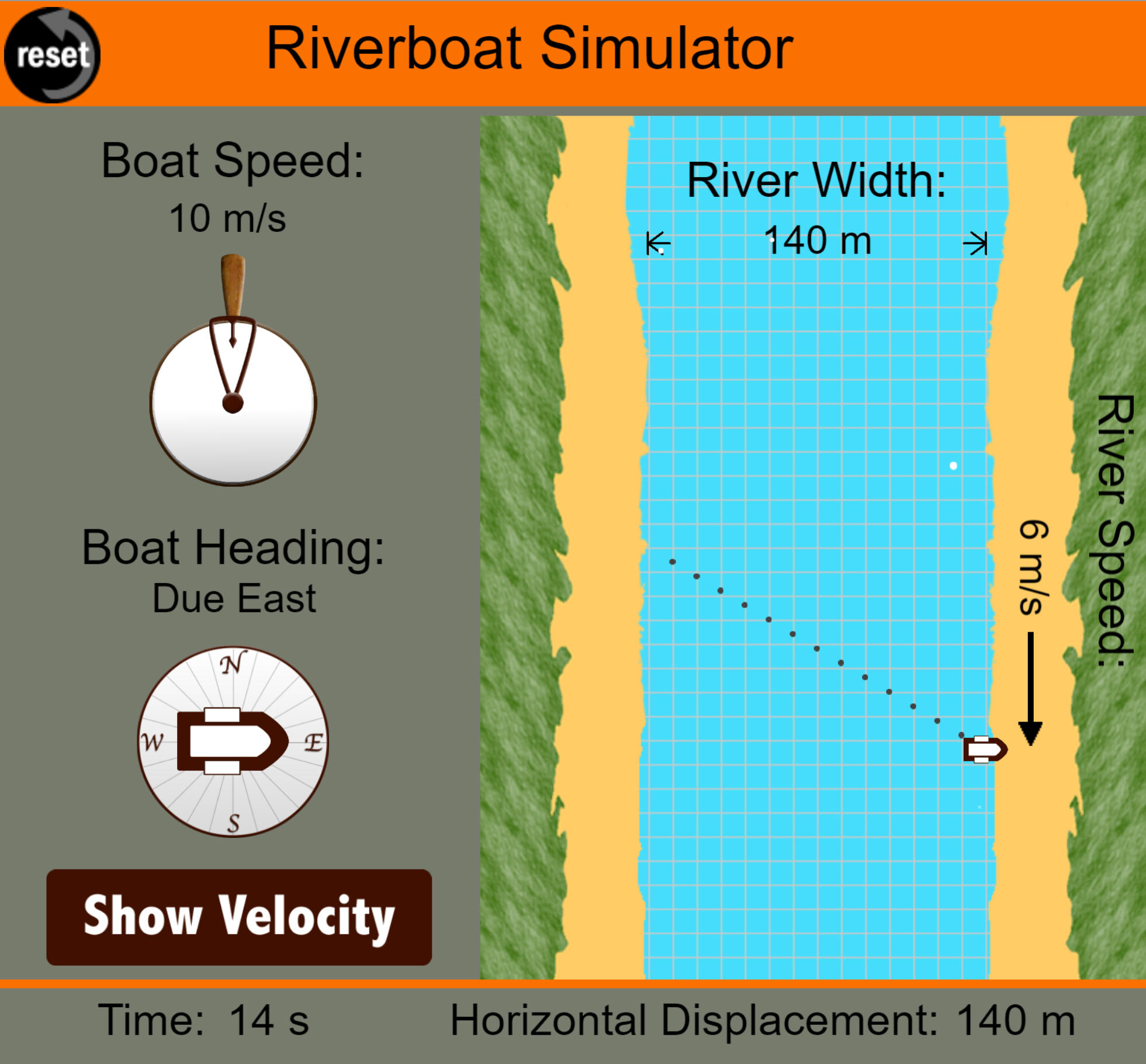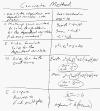Warm Up: Get together with your group and make a copy of the "[your names]Water Rocket Flight Model" spreadsheet in Google Classroom. We're going to populate it together.
Today:
- Is there any disassembly left to do?
- Finish Water Rocket Analysis Part 1 (PDF)
- Work on Water Rocket Analysis Parts 2 and 3. Water Rocket Project Handout #2 (PDF)
- Note to self -- beware of the word "deserve."
- Here's the Vernier Video Analysis App link
Homework:
- Divide the project work among group memgers and work on some at home.
- The project is due on Friday. There will be class time to work on it today, tomorrow, and probably Wednesday.
- Tentative test day next Tuesday.
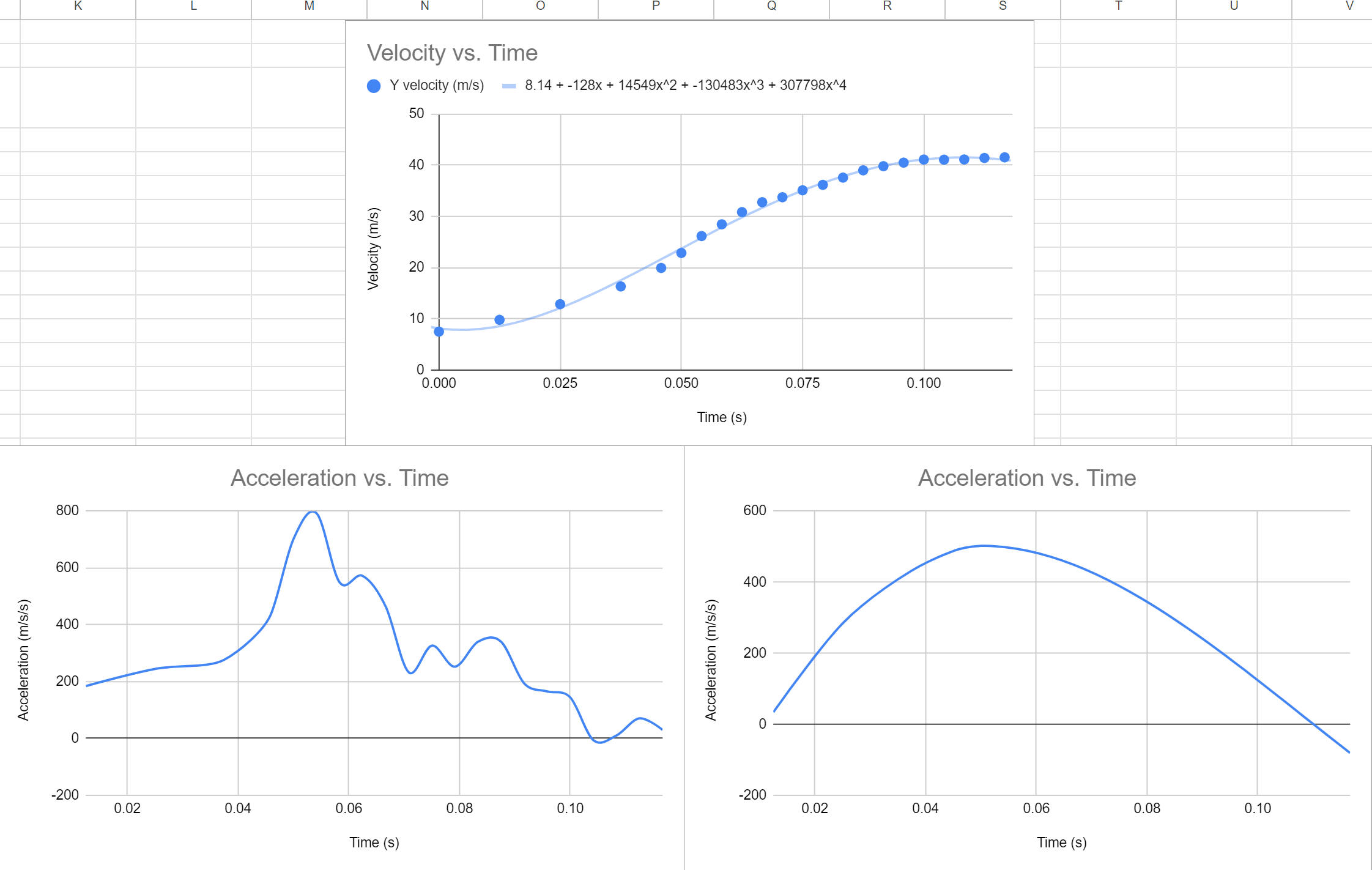 Class
27.5: Friday 11/17/23
Class
27.5: Friday 11/17/23Warm Up: To make this velocity graph (top), I pasted data from Vernier Video Analysis into Sheets and graphed Y-velocity vs. time. Then I used the basic acceleration formula to calculate accelerations from the velocity and time data. I graphed those and got the acceleration graph on the left. Then I used Elena's clever trick and created the far superior acceleration graph on the right. How did I do it?
Today:
- Let's actually do this today -- Recycle, reuse, trash the rocket parts
- Work on Water Rocket Analysis Part 1 (PDF)
- Here's the Vernier Video Analysis App link
Homework:
- None
- Optional -- Someone asked about a bonus option, so... for up to 4% extra on your project grade, use video analysis data of your rocket to create a spreadsheet with precise and accurate graphs of 1) acceleration, 2) mass, 3) drag, and 4) thrust (each vs. time) for your rocket, during the thrust phase. Explain your methods/reasoning. For the acceleration graph, you will probably want to use the same method that I described in the warmup.
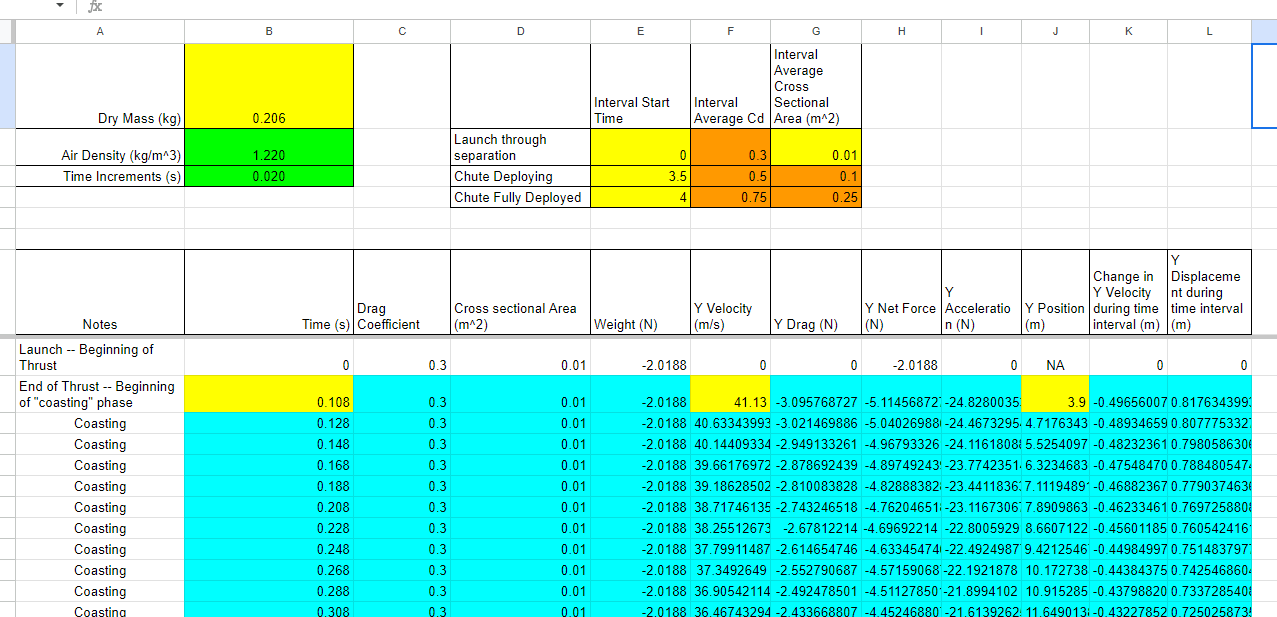 Class
27: Thursday 11/16/23
Class
27: Thursday 11/16/23Warm Up:
Let's set up your spreadsheet together, so that it works like this one.
Today:
- Work on Water Rocket Analysis Part 1 (PDF)
- Here's the Video Analysis link
Homework:
- None
 Class
26.5: Wednesday 11/15/23
Class
26.5: Wednesday 11/15/23Warm Up:
How many water bottles are used to launch this game show contestant? Is this for real? Could we launch a student this high?
Today:
- Check/review homework that was assigned last Thursday
- Start disassembling rockets
Homework:
- Find your video
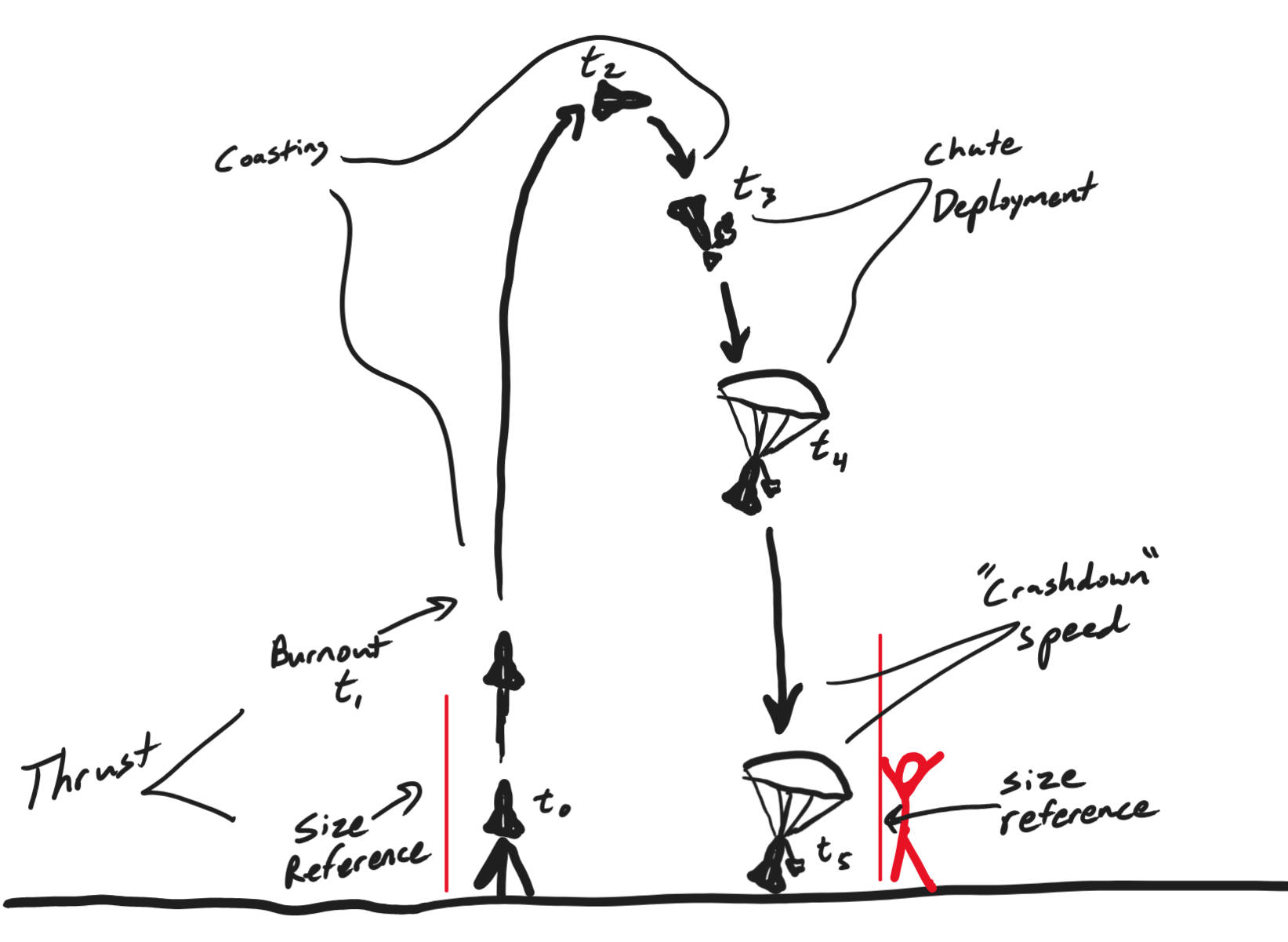 Class
26: Tuesday 11/14/23
Class
26: Tuesday 11/14/23Warm Up: The drawing on the right shows important times that can be used to model the rocket's flight. I will record a close-up video of the thrust period and the landing. Others will video the entire flight from afar.
Today:
- Get the "Water Rocket Launch Checklist"
- Work your way down the checklist.
- Launch rockets and collect video data. Hopefully the lone bike pump will keep working! (I'm not sure where the backup is.) If it gives out, we will launch tomorrow.
Homework:
- None
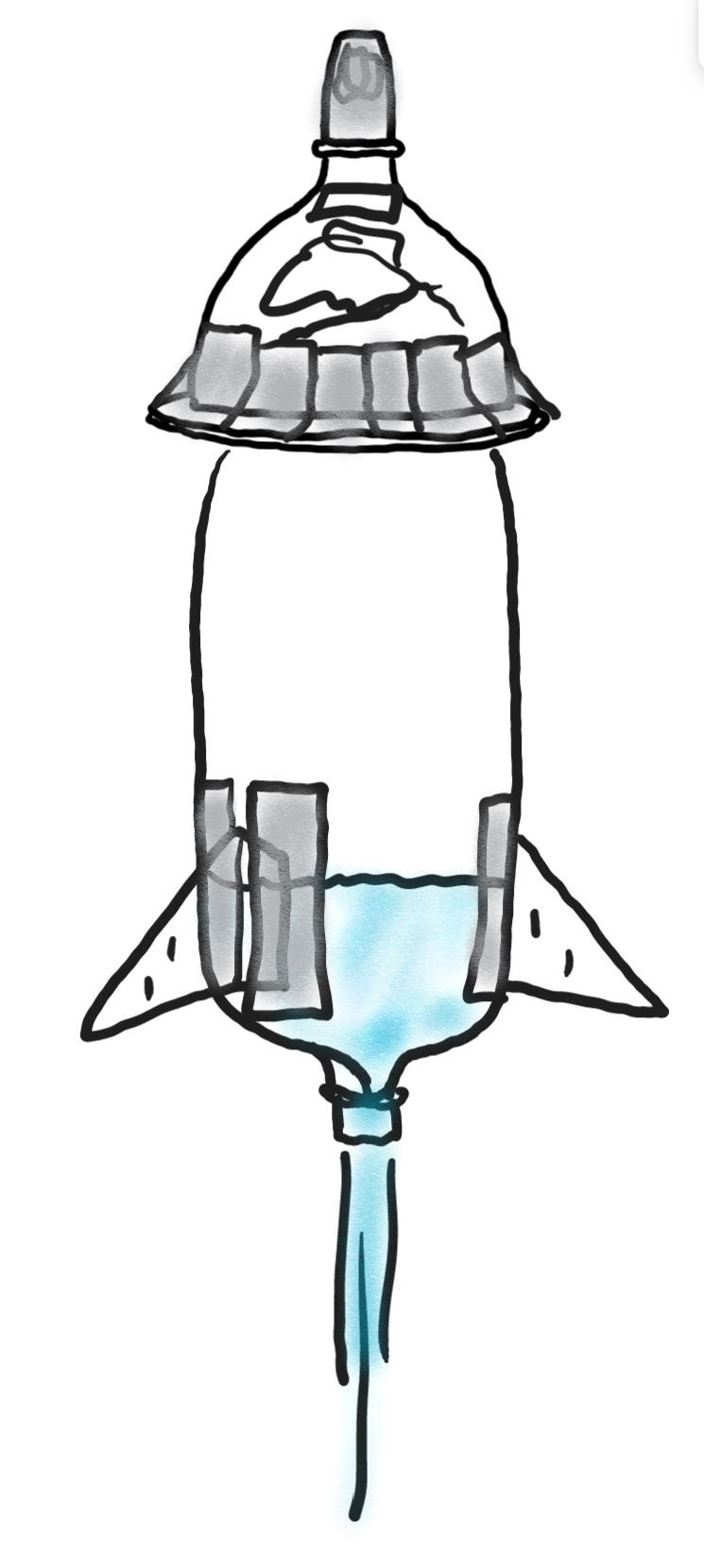 Class
25.5: Monday 11/13/23
Class
25.5: Monday 11/13/23Warm Up:
What's the best amount of water to put in a water rocket? [Find out, according to Clifford Heath.] How does the amount of water affect force and overall change in velocity?
1. What happens if you don't add any water?
2. What happens if you completely fill the rocket with water?
Today:
- Check/review homework
- Finish rockets
- Record Rocket Data
- Launch tomorrow
- Unit 3 Handout (PDF)
Homework:
- None
Warm Up: None
Today:
- Build water rockets
- Each group can have two 2-Liter Bottles. One is for the pressure chamber/fuselage. Don't poke a hole in that one!!! The other bottle can be used for for making the nose cone and fins.
- Here's how the launcher attaches to the neck of a
bottle.
 Don't block the neck!
Don't block the neck! - If you want to follow my instructions, use my water rocket construction playlist. Watch the summary video first!
- Here's where the materials are stored:
- 2 Liter bottles are in a big bag in the back of the room. Don't move the bag! Save the smooth-sided bottles for making fins.
- Weights, flanges, platforms, a scraper (for removing hot
glue from counters), and duct tape are in the blue Lowes
bucket and a cardboard box. Here are the locations of
the bucket and the cardboard box...
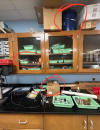
- Hot glue guns and glue sticks are in one of the glass cabinets. I circled their location in the photo above.
- Utility knives (for poking holes in a 2-liter bottle so
that you can then cut it with scissors) are in the top left
drawer of the teacher desk.
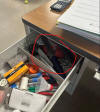
- Scissors are in the bottom left drawer of the teacher
desk. They're mostly bad, but better than nothing.
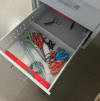
- Extra staples (for stapling the fins to reduce their cross sectional area) are in the center drawer of the teacher desk.
- Cotton twine should be on the South counter somewhere. If not, there's some thicker twine in the newton car box on the top shelf.
- Clean up and return materials to their proper location!!!!! I would prefer that you don't finish, rather than leave a mess. We can always finish later.
- Store rockets in a cabinet or a high shclf, with your names on your rocket.
Homework:
- Due on Monday #4 on p. 22
 Class
24.5: Thursday 11/9/23
Class
24.5: Thursday 11/9/23Warm Up:
The diagram on the right shows a 2-liter bottle water rocket. Mass has been added to the tip of the rocket's nose cone, and fins have been added to the back (bottom). The nose cone sits loosely on a platform that is hidden beneath the nose cone's flange. The nose cone and pressure chamber are not fused together, but they are connected by a string, which also connects to the parachute. Video of one rocket another video
1. What makes the rocket move upward?
2. Why do fins need to be added to the back of the rocket? How does this work?
3. Why does mass needed to be added to the front of the rocket? How does this work?
4. Aside from stability, what other reason is there for adding mass to the rocket?
5. What's the purpose for the flange at the bottom of the nose cone?
Today:
- Check/review homework
- Rocket Project -- (group size limit = 3 students)
- Competition Goal: Using a 2-liter water bottle as the pressure chamber, build a water rocket that stays in the air the longest. Limit your duct tape use to 1m or less. You will be expected to disassemble your rocket when we are done, so that the parts can be recycled or reused (except for the duct tape and a small amount of hot glue).
- Learning Goal: Analyze and understand the forces acting on your water rocket throughout its flight.
- If you want to use my design, here's how I make one... Construction playlist
- To get an idea of how much water to add when we launch, you might want to try Clifford Heath's simulation.
Homework:
- Be ready to make a rocket tomorrow.
- If you want to use my methods, speed-watch my construction videos tonight. The one thing I don't think I show is how I add the weight to the nose cone. I just duct tape it on top of the tip.
-
If you want materials other than those
listed below, you must bring them...
- Provided materials: 1m of duct tape, hot glue guns and sticks, circular wooden platforms and "flanges," plastic sheet, cotton twine, scissors, utility knives, scissors, weights
- Due on Monday #4 on p. 22
 Class
24: Wednesday 11/8/23
Class
24: Wednesday 11/8/23Warm Up:
1. How fast does chalk fall? Is it faster than a cat?... My spreadsheet answer
2. Sometimes people celebrate special occasions by firing guns into the air. Is this safe?
 3. Why don't clouds fall out of the sky?
3. Why don't clouds fall out of the sky?
Calculated terminal velocities of various spheres.
Today:
- Check/review homework
- Notes -- p. 12-13 -- Drag and Terminal Velocity. Fill out table for #5 on p.15. Filled-in notes and solutions 2021 Notes Video -- Start at 15:48.
- Work time
- Coming up
- Thursday: Introduce water rocket project -- build a water rocket that stays in the air for a maximum amount of time; using measurements and video data, create a spreadsheet model and a pictorial model (diagrams) of the forces acting on the rocket during flight.
- Friday: Mr. Stapleton gone to Quebec City -- work on water rockets (and maybe more)
Homework:
- #4 on p. 18 Solutions
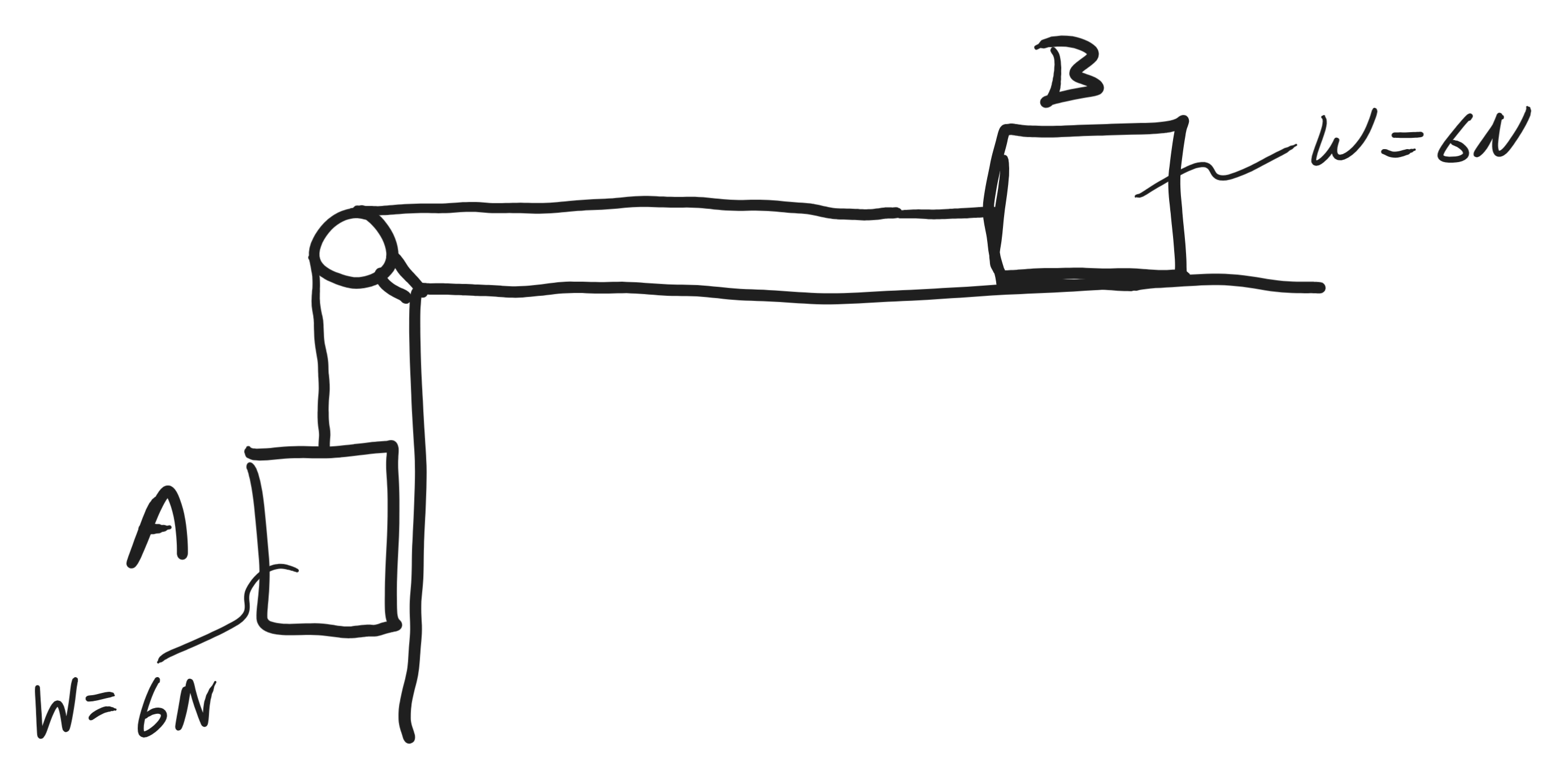 Class
23.5: Tuesday 11/7/23
Class
23.5: Tuesday 11/7/23Warm Up: Provide a quantitative explanation for what is going on in this situation.
Both A and B are initially motionless, and each has a weight of 6N. You apply an increasing leftward force to B, and both objects begin to move when your applied force reaches 3N (leftward). If you do not exceed 3N, and you stop applying force, the blocks continue to move at a constant speed.
Today:
- Check/review homework
- Work time
- Coming up
- Wednesday: drag and terminal velocity
- Thursday: Introduce water rocket project -- build a water rocket that stays in the air for a maximum amount of time; using measurements and video data, create a spreadsheet model and a pictorial model (diagrams) of the forces acting on the rocket during flight.
- Friday: Mr. Stapleton gone to Quebec City -- work on water rockets (and maybe more)
Homework:
- Problem 5, on packet page11. New scanned solutions -- complete but a little messy Video of Solutions
- Problem # 8 on p. 16 Unit 3 Handout (PDF) solutions
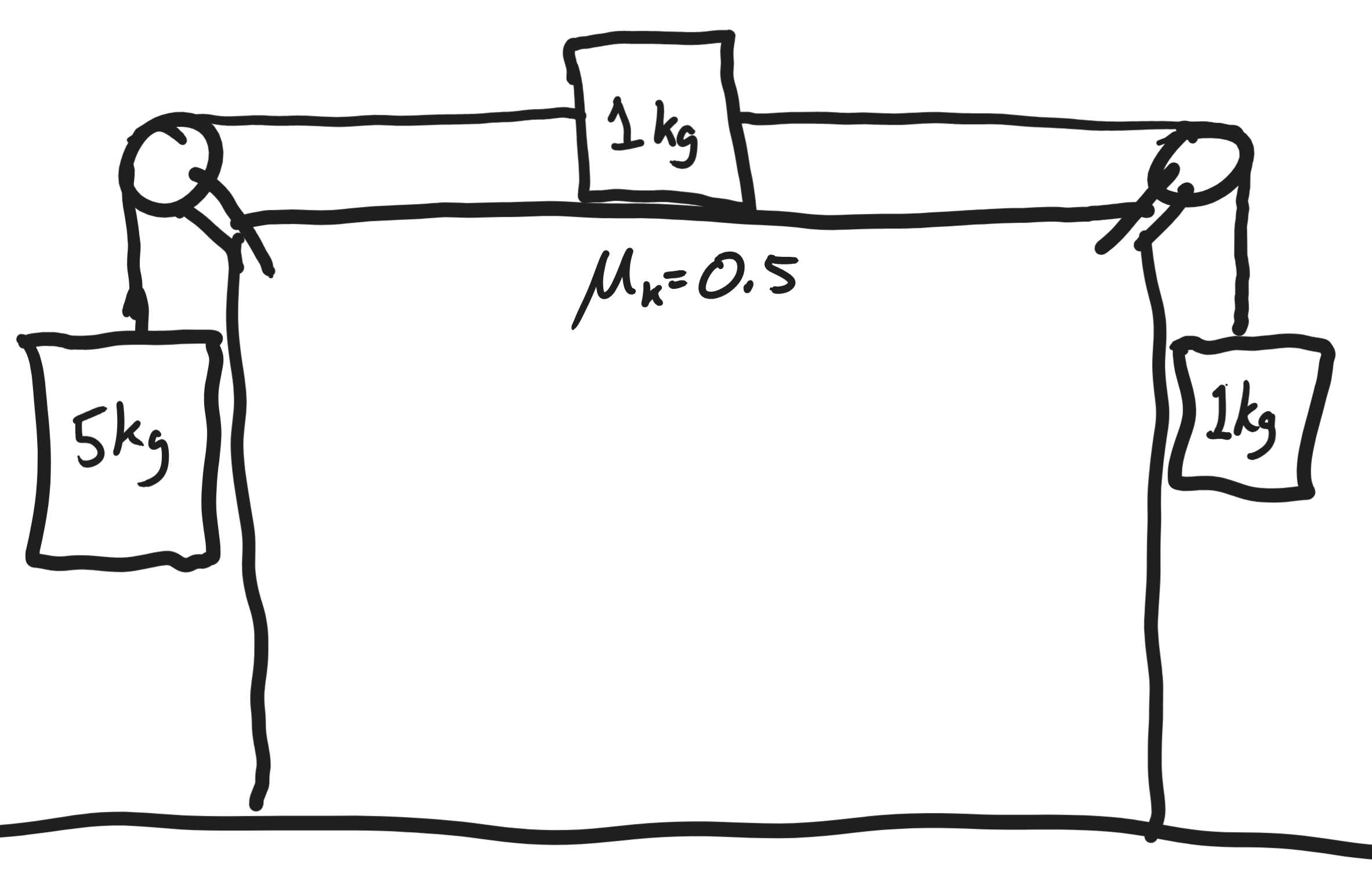 Class
23: Monday 11/6/23
Class
23: Monday 11/6/23Warm Up: Given the coefficient of friction between the top mass and the table top, find the masses' acceleration. The pulleys and strings are massless and frictionless. [Hint: treat all of the masses as one object and follow the usual recommended steps.]
Today:
- Check/review homework
- Notes p. 9-10: systems and multibody problems Filled-in notes Class video from 2020 -- systems notes start around 22:50 Video of just the multibody practice problem on p. 10
- Work time
Homework:
- Problems 1-4, on packet page 10-11. New scanned solutions -- complete but a little messy Video of Solutions
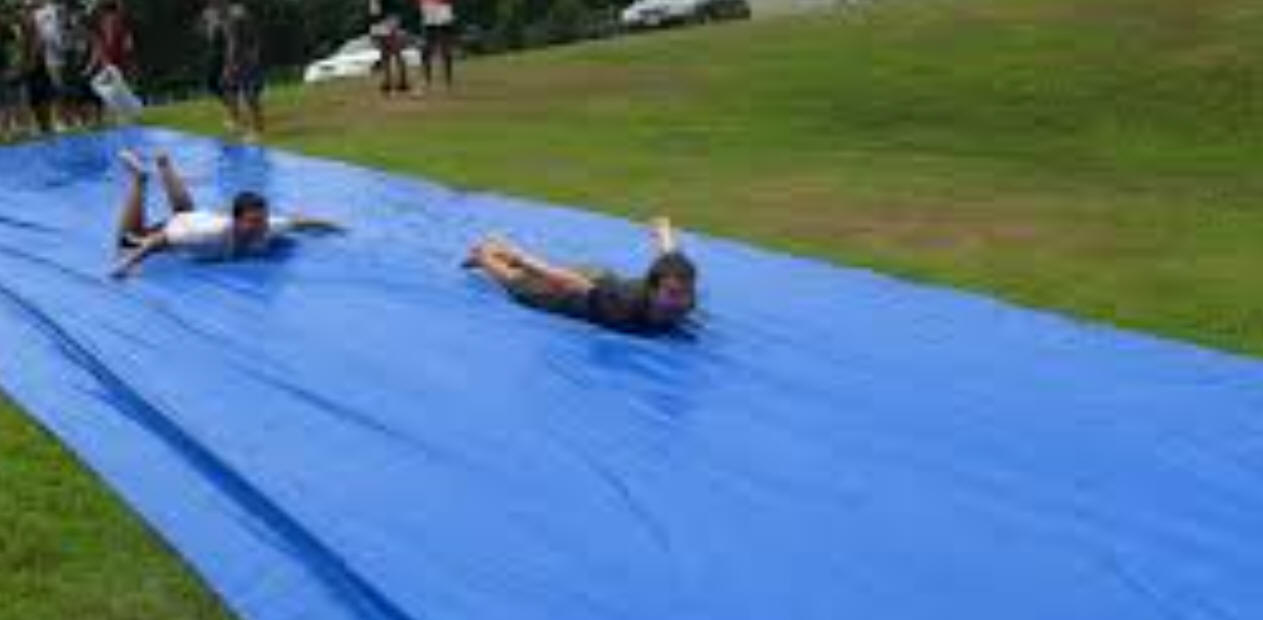 Class
22.5: Thursday,
11/2/23
Class
22.5: Thursday,
11/2/23Warm Up: On level ground, Tim begins sliding with a velocity of 6m/s. If Tim's slide lasts for 2 seconds, what is the coefficient of kinetic friction between Tim and the slide?
Today:
- Check/review homework
- Work time
Homework:
- #5-7 on Page 16 Unit 3 Handout (PDF) solutions
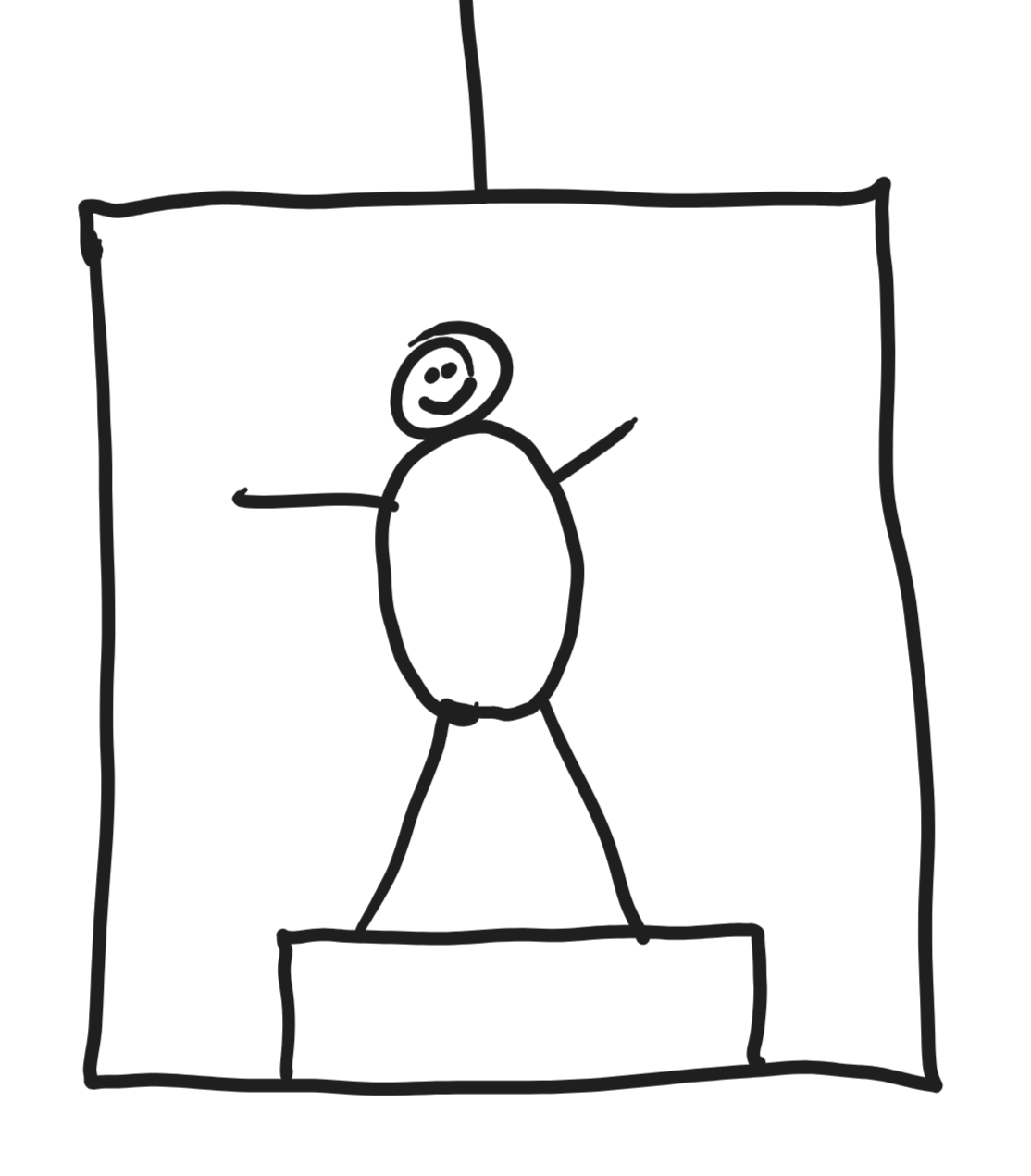 Class
22: Wednesday,
11/1/23
Class
22: Wednesday,
11/1/23Warm Up:
How many Newton's 3rd Law action/reaction pairs of forces can you identify in this situation... Someone is standing still on a bathroom scale in a motionless elevator.
Today:
- Finish reviewing the Newton Sled activity (mostly in 7/8)
- Notes: Friction (Packet pages 7-8, and chapter 5.1 in the online textbook) Filled-in version
- Some friction practice problems:
- With kinematics -- given the coefficient; finding the coefficient
Homework:
- Problems #10-14 on pages 5-6 (Unit 3 Handout (PDF), Answers and Solutions
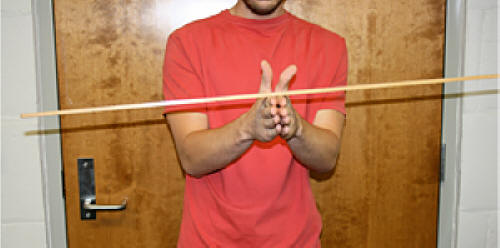 Class
21.5: Tuesday,
10/31/23
Class
21.5: Tuesday,
10/31/23Warm Up: One way to find the center of mass (a.k.a. balance point) of a stick is to support it with two hands and then slowly move those two hands together until they meet under the stick's center of mass. How does this method work?
Today:
- Check/review/return Newton Sled sheets
- Return test retakes and then collect again.
Homework:
- None
Warm Up: None
Today:
- Optional test retake
- Turn in the Newton Sled questions if you want to have them checked.
Homework:
- Finish the Newton Sled activity questions and final problem.
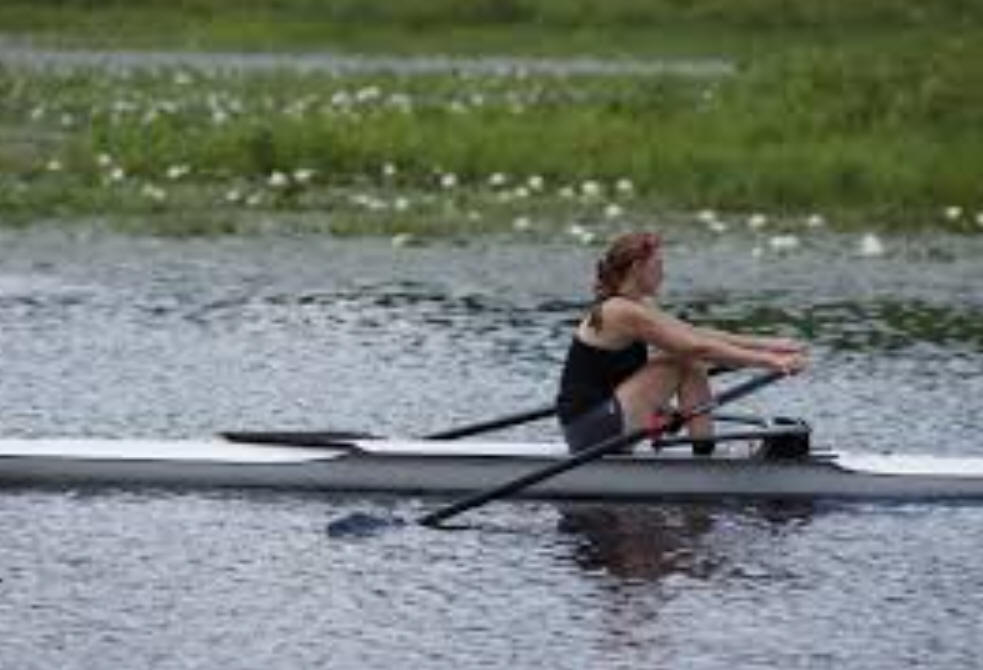 Class
20.5: Friday,
10/27/23
Class
20.5: Friday,
10/27/23Warm Up: The rower in the photo has a mass of 50kg and a leftward acceleration of 1m/s2. She is pulling against the oars with a total force of 100N. Sketch a diagram showing all of the forces acting on the rower. Find all of the forces' magnitudes.
Today:
- Check/review homework
- Finish collecting data for the Newton Sled Activity PDF
Homework:
- Finish the Newton Sled activity questions and final problem.
- Optional retake on Monday.
 Class
20: Thursday,
10/26/23
Class
20: Thursday,
10/26/23Warm Up: Is it literally possible to "pull yourself up by your own bootstraps?" Explain.
Today:
- Check/review homework
- Notes: 3rd Law and Tension -- VIDEO of notes.
- Unit 3 Handout (PDF) solutions
- Newton Sled Activity PDF
Homework:
- #1-4 on p. 14. Solutions
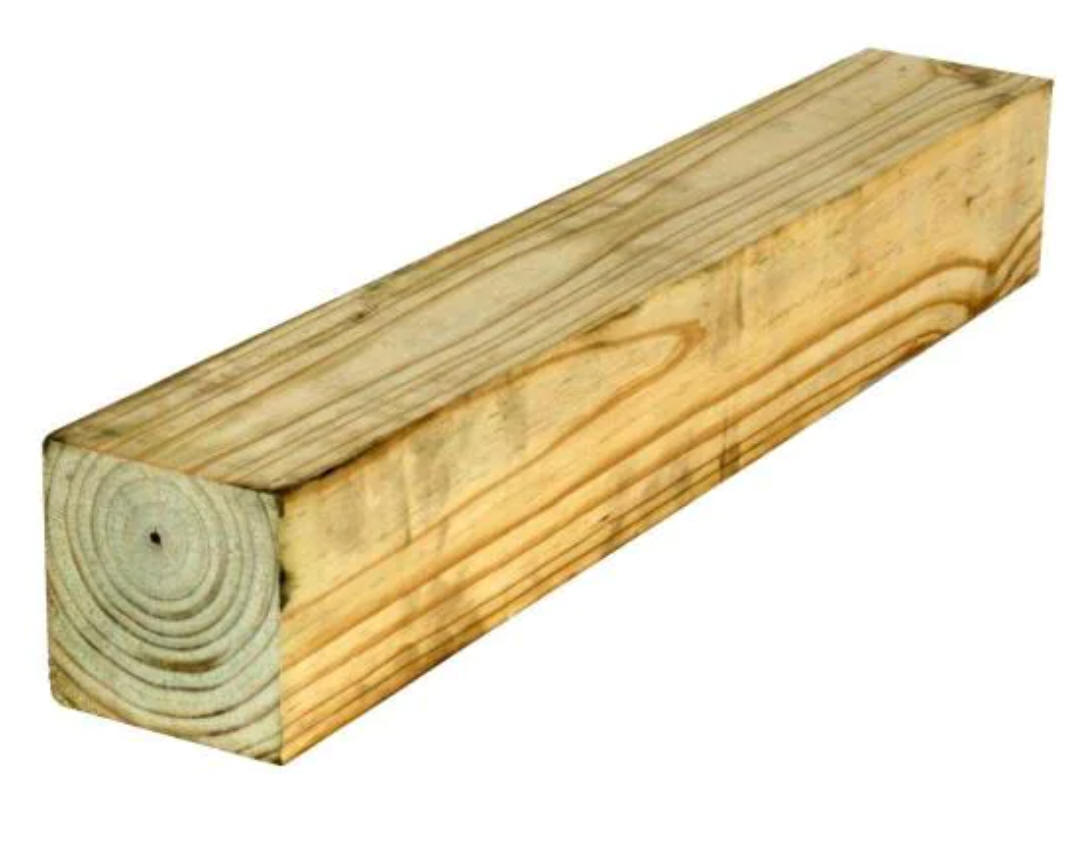

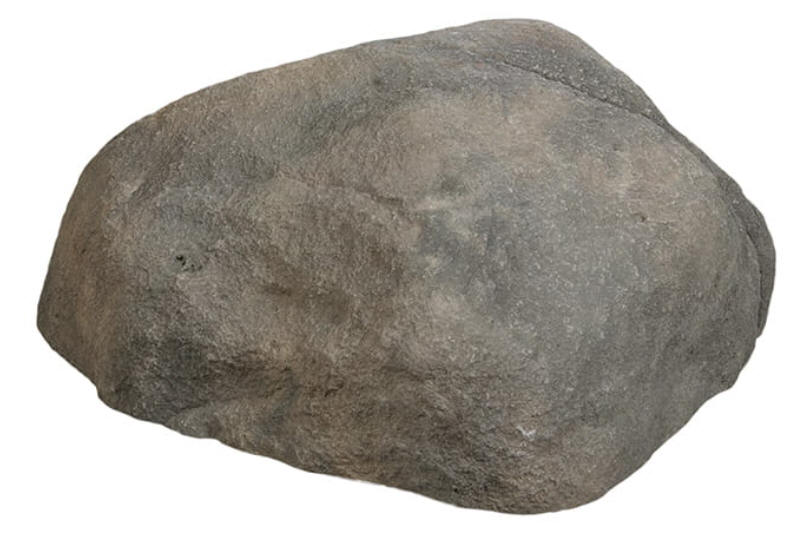 Class
19.5: Wednesday,
10/25/23
Class
19.5: Wednesday,
10/25/23Warm Up: I have a length of treated 4"x4" lumber, some large nails, a hammer, and a large rock. How will it feel if I put the rock on my head and then have someone pound nails into the wood on top of the rock?
Today:
- Check/review homework
- Work time
Homework:
- "conceptual practice with drag," #1-4 on Page 16 Unit 3 Handout (PDF) solutions
- Optional 2-D Kinematics Test retake on Monday
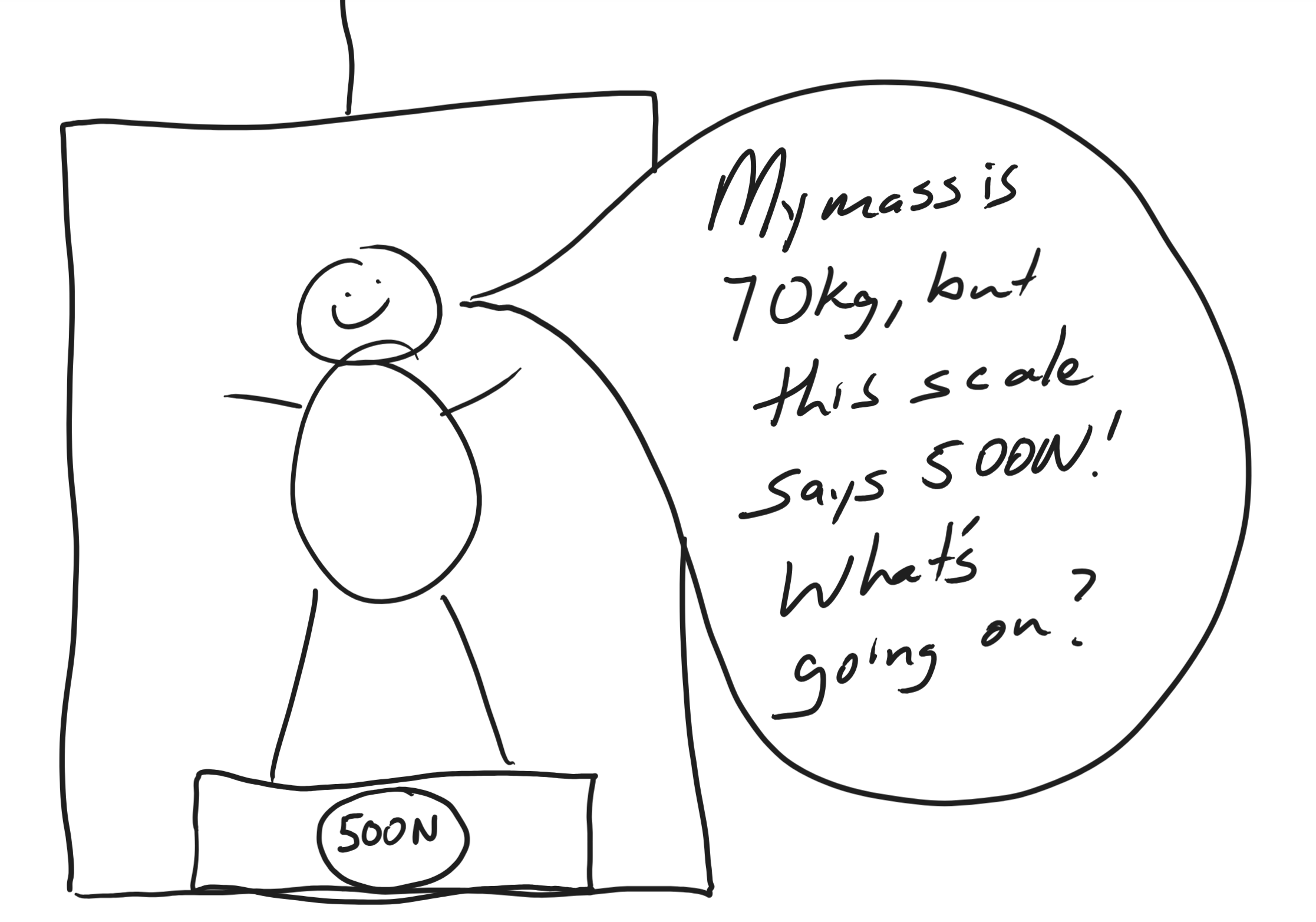 Class
19: Tuesday,
10/24/23
Class
19: Tuesday,
10/24/23Warm Up: A common occurrence in physics problems is someone standing on a bathroom scale inside an elevator.
1. Sketch vectors representing all of the forces (pushes or pulls) that are acting on the person in the elevator.
2. Write Newton's 2nd law (applied to the person) and plug in any values that you can.
3. Write an equation for net force as the vector sum of all of the forces acting on the person.
4. Set those two expressions of net force (net force as m*a and net force as the vector sum of forces) equal to one another and solve. Figure out what's "going on."
Today:
- Return projects
- Solution to bonus problem.
- Finish notes on Newton's 1st and 2nd Laws.
- Filled-in Notes p.1-3.
Homework:
- Conceptual #3-4 and Problems #4-9 on pages 4-5 of the Unit 3 Handout (PDF) Answers and Solutions
- Optional retake next Monday -- I will share videos with you some time today.
 Class
18.5: Monday,
10/23/23
Class
18.5: Monday,
10/23/23Warm Up: It is possible to remove a sheet paper from under a dry erase pen without touching or tipping the pen. How can one do this without tipping the pen? Why does the pen usually fall? What kind of pen would work better?
Today:
- Return tests and project grades
- Begin notes on Newton's 1st and 2nd Laws. Make a VIDEO for absent people.
Homework:
- Conceptual questions #1-2 and Problems #1-3 on pages 3-4 of the Unit 3 Handout (PDF) Answers and Solutions
- Optional retake next Monday -- I will share videos with you some time today.
Warm Up: None
Today:
- Test
Homework:
- None
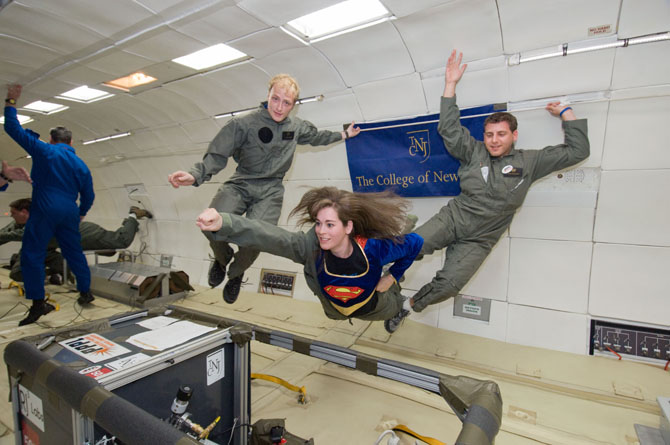 Class
17.5: Thursday,
10/19/23
Class
17.5: Thursday,
10/19/23Warm Up: How does NASA simulate weightlessness?
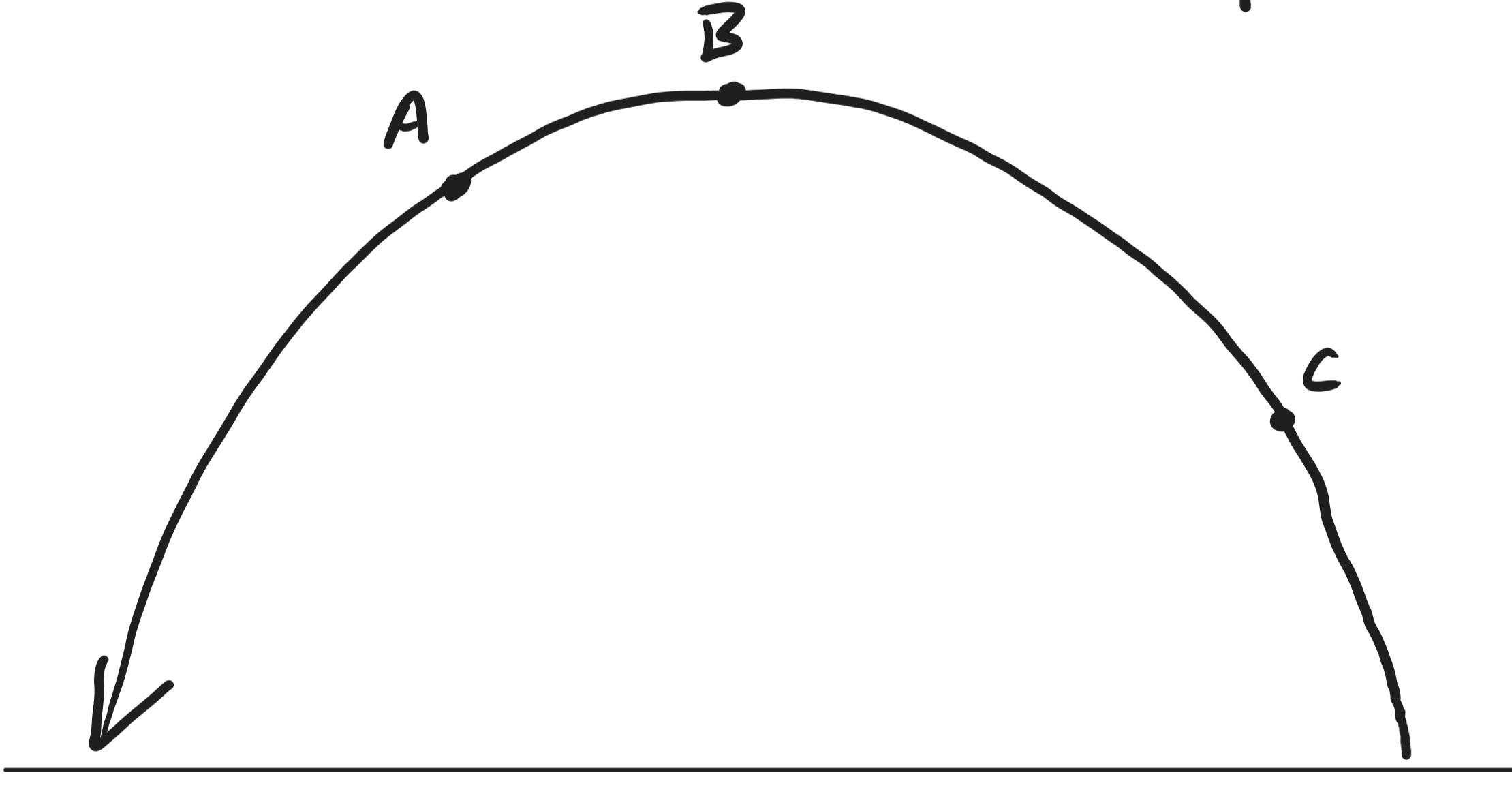
Today:
- Test questions? Do some more practice.
- Begin the notes on forces and Newton's Laws? Unit 3 Handout (PDF)
Homework:
- Test tomorrow. Prepare.
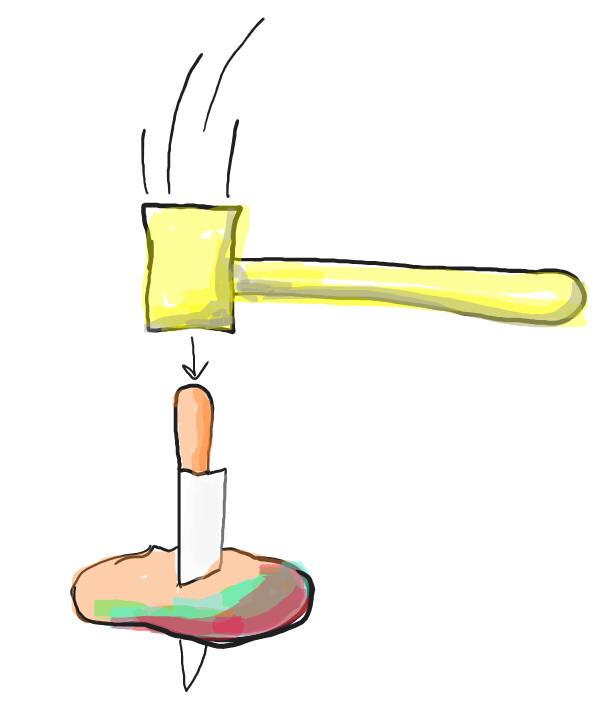 Class
17: Wednesday,
10/18/23
Class
17: Wednesday,
10/18/23Warm Up: What will happen if I poke a knife through a potato, hold both objects in the air with the knife pointing downward, and then hammer the butt of the knife into the potato? Why? What if it's an apple, because I didn't have potatoes?
Today:
- Test questions? Do some non-orthogonal practice problems.
- Get the Unit 3 Handout (PDF)
Homework:
- Be ready for the test on Friday
- We're starting a new unit tomorrow, but if you have questions about the test, we can discuss them. Write down any questions that you have and share them tomorrow.
- Conceptual #1-2 and Problems #1-3 on pages 3-4 of the Answers and Solutions
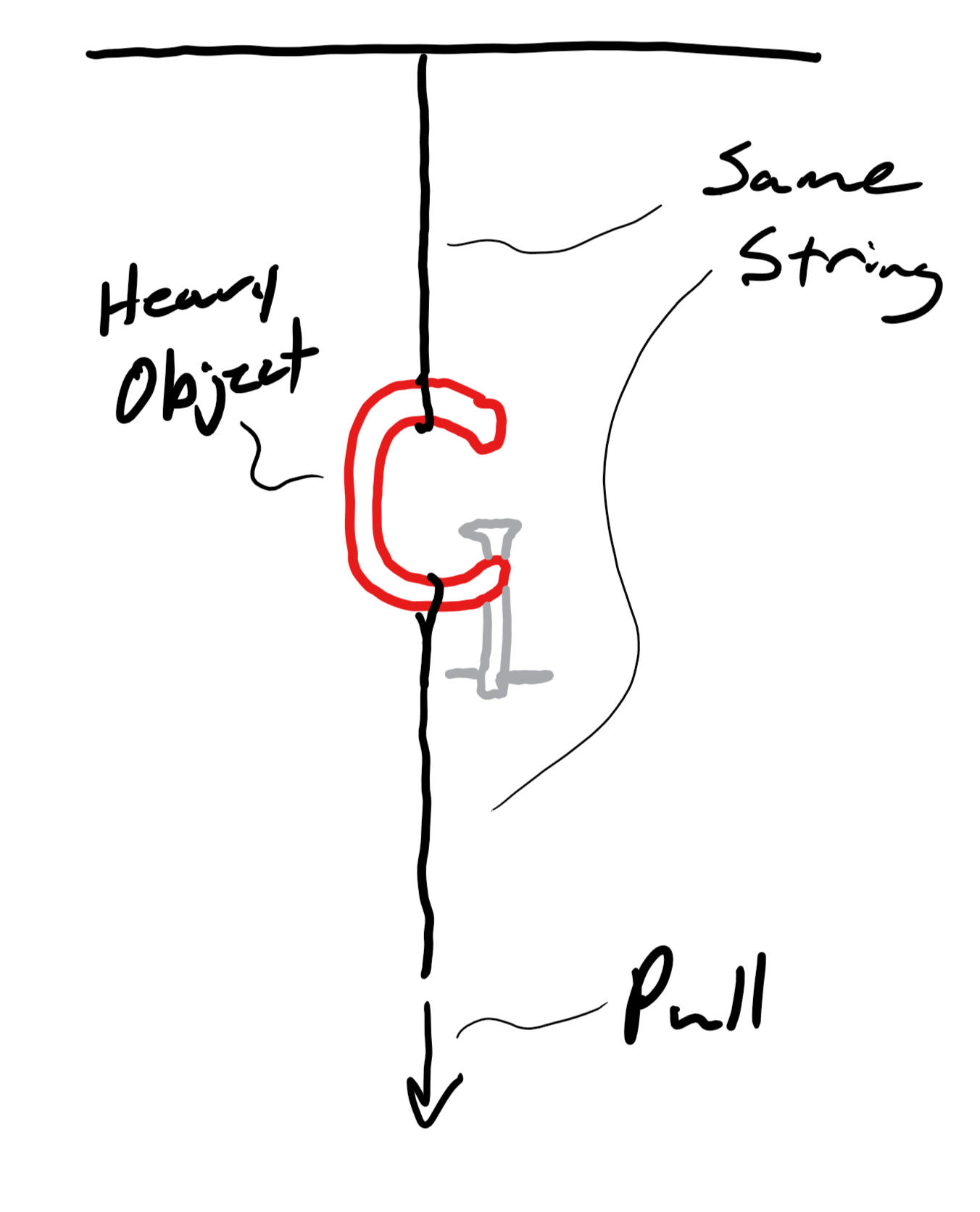 Class
16.5: Tuesday,
10/17/23
Class
16.5: Tuesday,
10/17/23Warm Up:
There is a heavy object suspended from the ceiling by a string. Another segment of the same string is hanging downward from the object. I am going to pull on the bottom string until one of the two strings breaks. Which string is going to break first? Why?
Today:
- Present donuts
- Check/review homework "Another practice test" -- last year's test. (PDF) Answer Key
- Test format:
- 10-15 short answer/multiple choice
- 2 River problems with multiple parts (one orthogonal, one non-orthogonal)
- 3 Projectile motion problems, each with multiple parts
- Next Unit -- Forces (Newton's Laws)
- What sort of review help do you need?
Homework:
- Be ready for the test on Friday
- We're starting a new unit tomorrow, but if you have questions about the test, we can discuss them. Write down any questions that you have and share them tomorrow.
Warm Up: None
Today:
- Hand in your contest problems sheet, with your launcher calibration graph attached.
- Get ready. Once you've been called to your stations...
- 3 minutes prep time before the launching begins
- 30 seconds between groups
- 2 shots at each station
- 1 minute prep time for rotating to the next station
- After the contest:
- Return your baggie of stuff (you may need it again)
- Store your launcher under the cabinet
- In Google Classroom, turn in one copy of your group's completed spreadsheet. Only one person needs to turn this in for each group.
Homework:
- In Google Classroom, turn in one copy of your group's completed spreadsheet. Only one person needs to turn this in for each group.
- Test Preparation
- Use this document to check your answers to last year's test.
- If you missed anything, or if you have uncertainty, about any question or problem, refer to the answer key and/or videos provided last class.
- If the materials provided last class don't clarify things for you, write your questions down. We will discuss them tomorrow, or on Wednesday.
Warm Up: Consider these things...
-- If you don't finish your plans in class, how are you going to know what the muzzle height will be when you tilt your launcher to a particular angle?
-- Plan your second shot. What if your first shot is 0.5m short? Or not high enough, and it hits an obstacle? By how much will you adjust your launcher setting for every 0.5m of error? What do you need to do to make an adjustment if you hit an obstacle?
-- How are you going to support and aim your launcher?
-- what happens if your rubber bands break?
-- what if your calibrations seem inexplicably wrong (all of the sudden)?
-- is there any other contingency that you can plan out ahead of time?
Today:
Homework:
- Test Preparation (Due on Tuesday):
- Use this document to check your answers to last year's test.
- If you missed anything, or if you have uncertainty, about any question or problem, refer to the answer key and/or videos provided last class.
- If the materials provided last class don't clarify things for you, write your questions down. We will discuss them next Tuesday.
- Contest Preparation:
- Re-read the "project grading" portion of the project document, and make sure that everything is in place for you to get the grade that you want -- Trajectory Contest Project handout (PDF)
 Class
15: Thursday,
10/12/23
Class
15: Thursday,
10/12/23Warm Up: This diagram represents free-fall.
1. If you were writing directions explaining how to draw Vx, Vy, and V for each of the three points in the diagram, what would you write?
2. How does speed change during the flight?
3. How does velocity change during the flight?
Today:
- Check homework. Review it next week.
- Get yourselves together
- Launcher Practice Time (the last good opportunity)
Tomorrow:
- As soon as your group is ready, you can hand in your bands/motors/projectiles and receive the contest problem descriptions. At that point you can begin strategizing and planning your shots for Monday. You will not be allowed to practice after you get the problems. Do not share problem information with groups that have not finished (and do not share with other classes).
- The launch order for Monday's contest will also be provided.
Monday: Here's a short video explaining the launching rotation process
- Bands/plungers/projectiles, etc. will be handed out, but no practice launches are allowed.
- Teams will turn-in one sheet of your team's contest problem solutions attached to a printed version of your team's launcher velocity calibration graph (V0 vs. Launcher setting). **Bring two copies, so that you can have one to refer to during the contest!**
- The first three teams will be assigned to a launch area (Area A, B, or C -- since there will be three problems).
- The setup will be briefly clarified.
- 3 minutes prep time will be provided before the first launch. After this, team 1 has 30 seconds to launch before forfeiting their turn.
- Team 1 will shoot first, from station A. A member of the team (or a friend from another team) will spot the projectile, so that it doesn't get lost. After Mr. Stapleton measures and annouces the projectile distance from the target, Team 2 has 30 seconds to launch their projectile.
- Each team has 30 seconds to launch (after the announcement of the previous group's error), or they forfeit their turn.
- After each team has had two launch opportunities from one station, positions are rotated (Team 1 to station B, Team 2 to station C, Team 3 to station A). One extra minute will be provided for rotating to the new station (before the 30 second countdown begins).
- After all three teams have launched twice, the next set of teams moves into position. 3 minutes will be provided for this transition. At the end of the 3 minutes, the team at station A has 30 seconds to launch before forfeiting their turn.
Homework:
- Test Preparation (Due on Tuesday):
- Use this document to check your answers to last year's test.
- If you missed anything, or if you have uncertainty, about any question or problem, refer to the answer key and/or videos provided last class.
- If the materials provided last class don't clarify things for you, write your questions down. We will discuss them next Tuesday.
- Contest Preparation:
- Re-read the "project grading" portion of the project document, and make sure that everything is in place for you to get the grade that you want -- Trajectory Contest Project handout (PDF)
Warm Up: None
Today:
- PSAT for Juniors
- Work time
Homework:
- Another practice test -- due tomorrow. This is last year's test. (PDF) Answer Key
- Explanatory videos -- use these if you get stuck
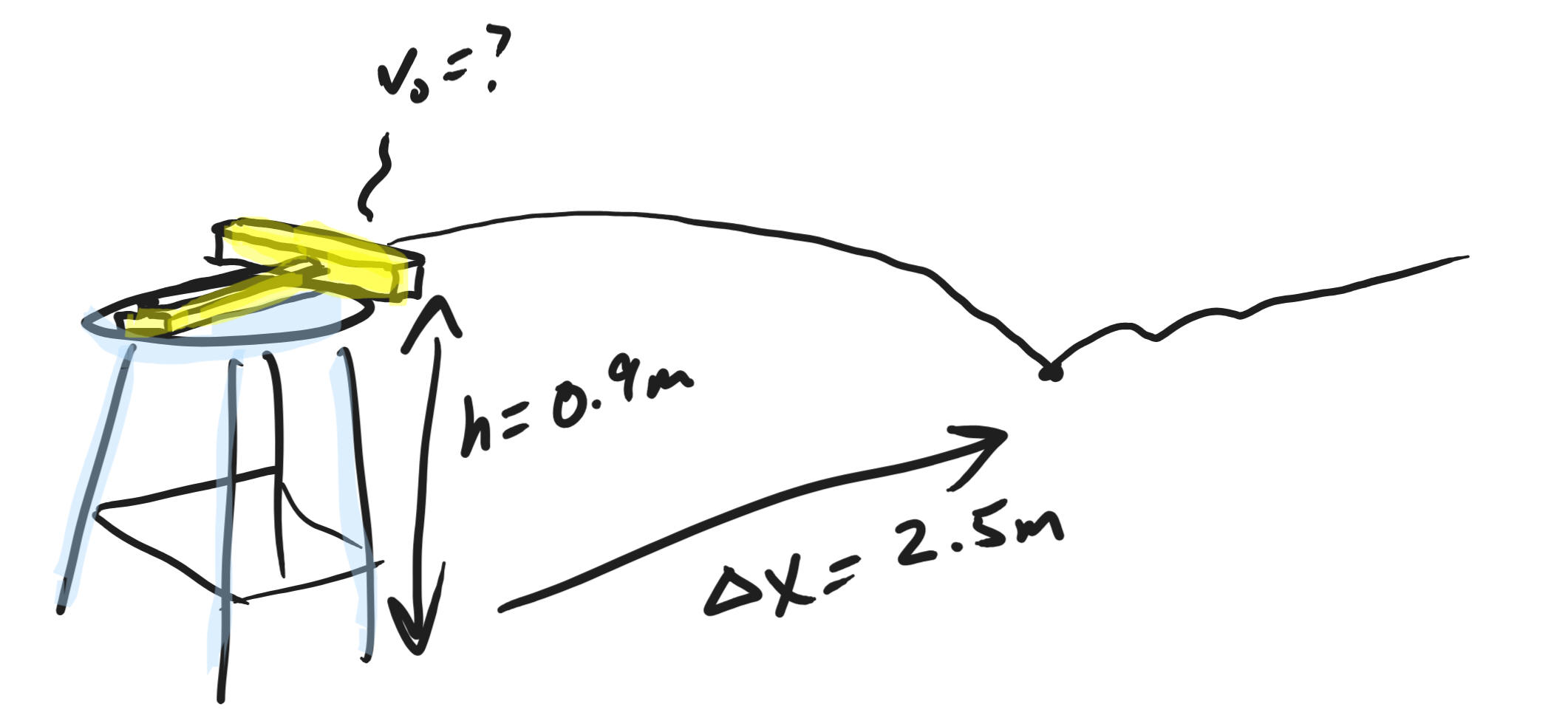 Class
14: Tuesday,
10/10/23
Class
14: Tuesday,
10/10/23Warm Up:
1. Use your spreadsheet to solve this. Write your answer on a sheet of paper so that I can see it. What is the initial velocity of projectile that is launched horizontally from a height of 0.9m, if the projectile travels 2.5m before hitting the floor?
2. Can you think of some experiments that you could perform in order to answer the question, "how does the launch angle of one of our projectile launchers affect the initial velocity of the projectile?"
Today:
- Check/review the homework
- Launcher practice time
Homework:
- Another practice test -- due on Thursday. This is last year's test. (PDF) Answer Key
- Explanatory videos -- use these if you get stuck
Warm Up: Suppose you calibrated your launcher using the horizontal method, and you determined that a launcher setting of 7 produces an initial speed of 5.6m/s. Later on, you need to launch your projectile with an initial speed of 5.6m/s, but the launch angle needs to be 45 degrees.
If you launched with a setting of 7 at a 45 degree angle, you probably won't hit the target. What is the main source of error? How can you compensate for this error?
Today:
- Note the homework change of plans
- Record the mass of your projectile
- Launcher practice time
Homework:
- A7/8 -- finish the notes on p. 6. Here's a video of me explaining things.
- Optional -- finish #8 on p. 7 of the notes. Starts at 9:45 in this video
- Due on Tuesday-- Packet p. 15 (1-5 of the 2nd practice test) of the Unit 2 Packet (PDF) Unit 2 Answer Key
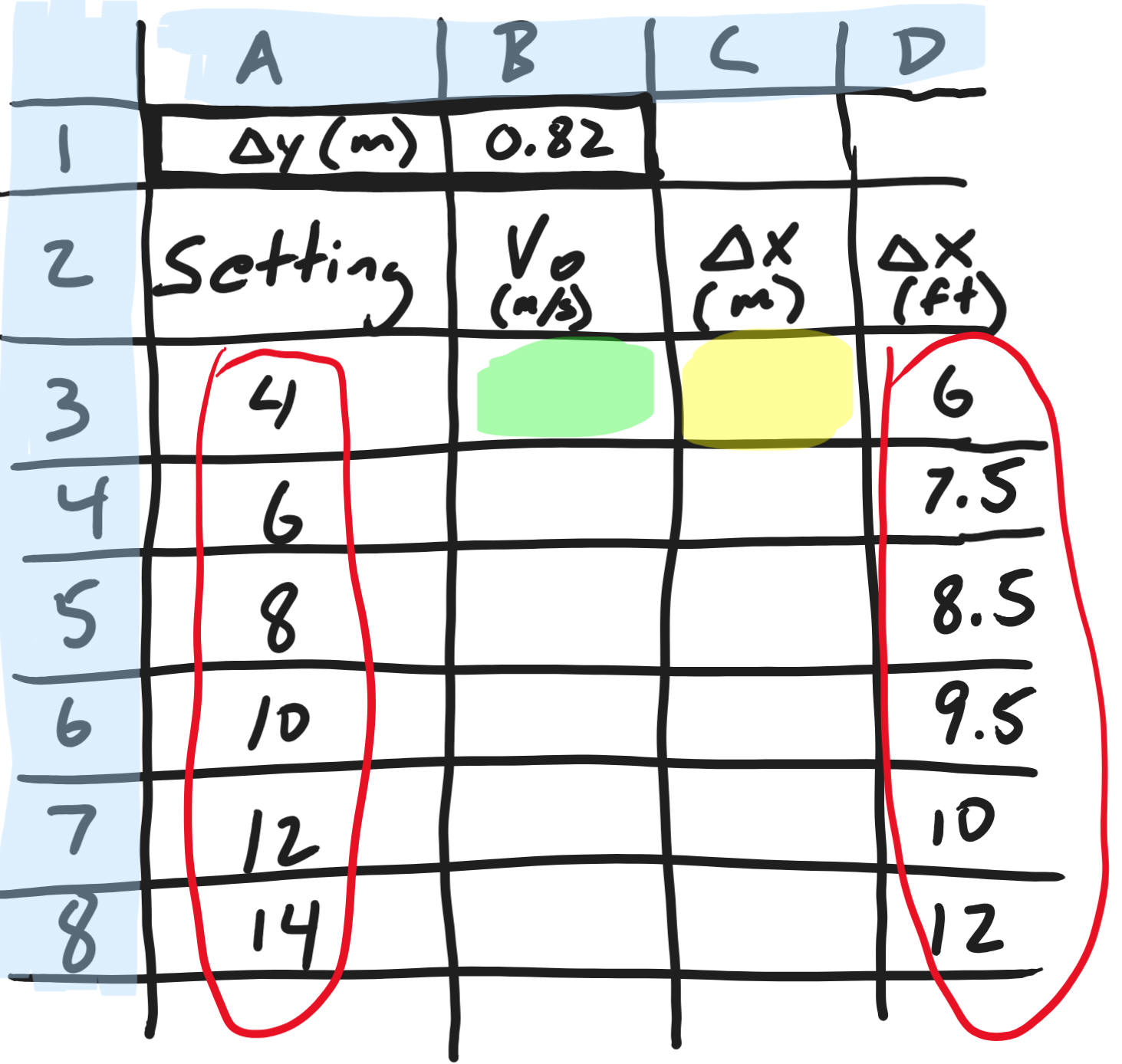 Class
13: Wednesday,
10/4/23
Class
13: Wednesday,
10/4/23Warm Up: Suppose you are calibrating your launcher by launching horizontally. The bottom of your projectile has a height of 0.82m when it leaves your launcher. You could automate the Vo calculations (in m/s) by setting up the spreadsheet cells on the right. [note: 1ft = 0.305m]
1. What formula should go in the yellow cell?
2. What formula should go in the green cell?
Today:
- Check/review the homework.
- Calibrate launchers. If you
have any doubt about which method to use, use the horizontal launch
method.
- How to use a cell phone to assist your launcher calibration and operation.
- Get a projectile launcher hall pass (PDF). Agree and sign it, or stay in the classroom.
- Try some test shots?
Homework:
- A7/8 -- finish the notes on p. 6. Here's a video of me explaining things.
- Optional -- finish #8 on p. 7 of the notes. Starts at 9:45 in this video
- Due on Tuesday-- Packet p. 15(1-5 of the 2nd practice test) of the Unit 2 Packet (PDF) Unit 2 Answer Key
Warm Up: None -- hand in your homework with your name on it. I'm going to check a few answers, keeping the owner anonymous (unless they're correct).
Today:
- Check/review the homework.
- Form groups of 2-3 for the projectile project. Please don't ask to add a 4th. In my opinion, the third person doesn't do much either, so 2 is best.
-
Assemble, adjust, and store your launcher materials.
- Materials: cord, trigger, nail, launcher, plunger, rubber bands, oak projectile
- Write down your launcher number, on the board (so we can all have a record)
- Assemble the "motor" -- plunger, bands, and cord
- Adjust your motor until the highest initial velocity (on your scale) is at least 10m/s.
- Place your motor in a plastic bag with your names on it, and give it to Mr. Stapleton for safe keeping.
- Tomorrow you can begin calibrating.
Homework:
- Packet p. 15 (1-5 of the 2nd practice test) of the Unit 2 Packet (PDF) Unit 2 Answer Key
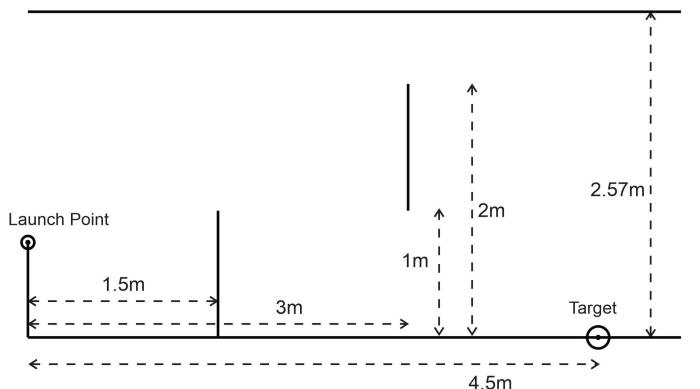 Class
12: Monday,
10/2/23
Class
12: Monday,
10/2/23Warm Up: Let's use My Spreadsheet to solve this problem...
Suppose we can launch a projectile from any position within a 0.5m vertical window above the "launch point," which is 0.75m above the floor.
1. What initial angle and speed should we use to hit the target while avoiding the obstacles and the ceiling?
2. How far should we stretch the launcher bands?
Today:
- Check/review the homework.
- Start working on the Projectile
Motion Project
- Get a copy of the Trajectory Contest Project handout (PDF)
- Make a copy of your graph and modify the copy to create an interactive flight path modeler with obstacles, target, launch window, etc. I will show you how to copy stuff from this "More Projectile Graph Stuff -- To copy and paste" spreadsheet and modify your spreadsheet. I will modify this one. Here's a video that I made showing how to do this.
- Work time
Homework:
- Use your spreadsheet to solve the problems in the Trajectory Contest Project handout (PDF)
- Enter the correct formulas in to the calibration cells on sheet two of your spreadsheet.
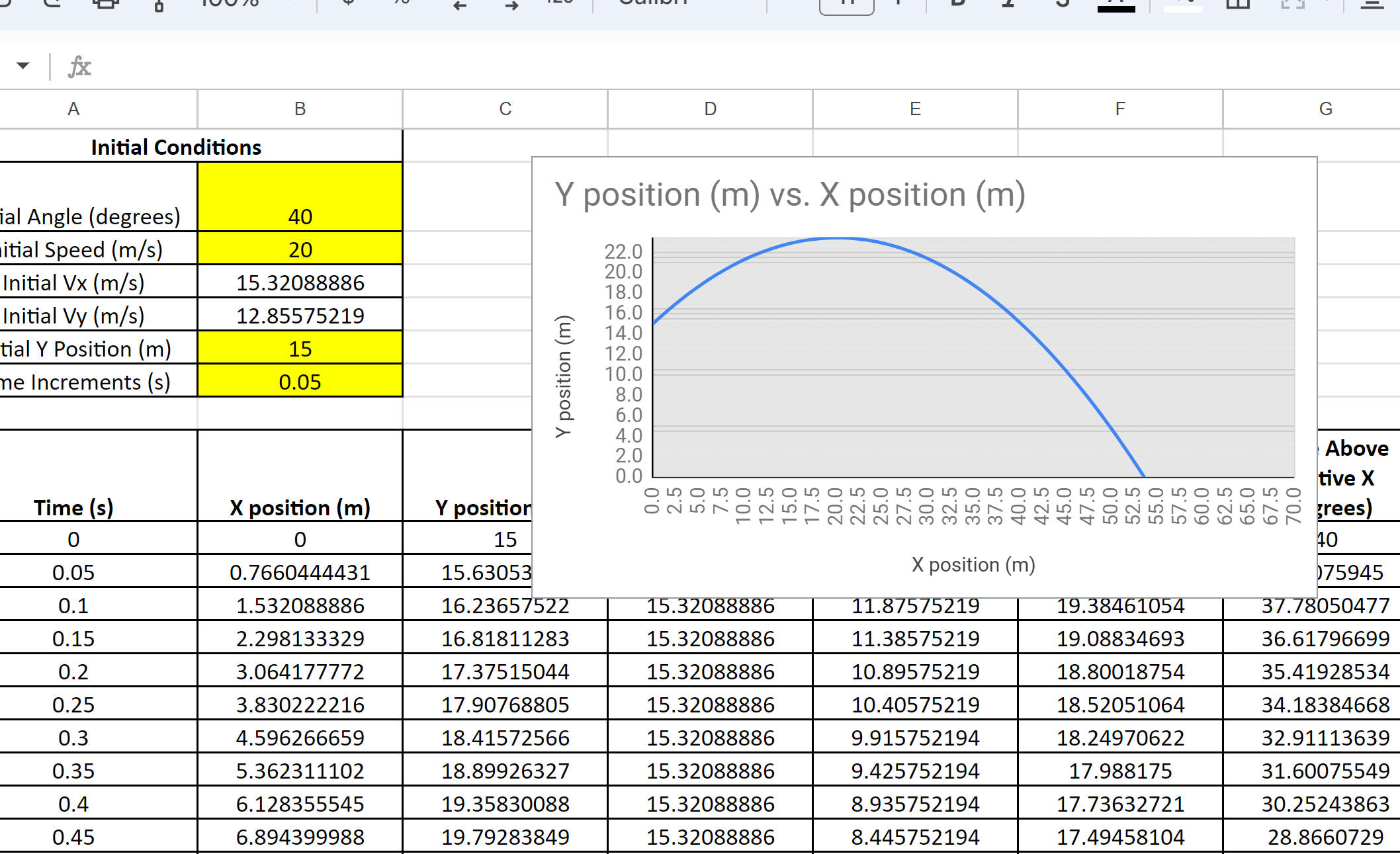 Class 11.5:
Friday,
9/29/23
Class 11.5:
Friday,
9/29/23Warm Up:
1. On your chromebook, open your spreadsheet and see if you can make a graph that looks like this one (Y position vs X Position).
2. Next make a copy of your graph and "move it to its own sheet."
Today:
- Finish the projectile motion spreadsheet. Here's mine (you don't have access).
- Make a graph of "Y position vs X position." Create a
copy of that graph on its own sheet. Try to format it so
that it looks as useful as this one

- Use the spreadsheet to solve some projectile problems -- the homework problems, yesterday's warmup, etc. Because of the way it's set up, some guessing and checking will probably be involved.
Homework:
Mr. Pennington's test problems #4-6 on p.14 of the Unit 2 Packet (PDF) Unit 2 Answer Key
 Class 11:
Thursday,
9/28/23
Class 11:
Thursday,
9/28/23Warm Up:
An olympic athlete throws a javelin at an angle of 34 degrees, with respect to the ground. The release point of the javelin is 1.3m above the ground. The javelin travels a horizontal distance of 90 meters and lands after a flight lasting 3.7 seconds.
1. At what angle is the javelin sticking out of the ground at its point of impact?
2. It turns out that the field is not level. How much higher or lower is the field at the point of impact, compared to the field at the point of release?
Today:
- Check/review homework
- Finish the notes on p.6-7 of the handout Unit 2 Answer Key Video of Notes from a past year's Class
- Introduction to the Projectile Contest
- Let's see how we can solve a problem using my spreadsheet.
- Set up your own projectile motion spreadsheet. Here's mine (you don't have access).
- I will demonstrate this in class and record my steps in a video. Here's the VIDEO
- Here's a template. Make a copy. Leave the initial values in yellow, so that you can compare your calculations with mine. Enter formulas and create graphs that look similar to mine.
- Check your calculations using this screenshot
 .
If they match mine in the row circled in red, everything is
probably okay. Make sure that your yellow inputs are the
same as mine.
.
If they match mine in the row circled in red, everything is
probably okay. Make sure that your yellow inputs are the
same as mine.
Homework:
- Finish your spreadsheet (see details above) and turn in a copy of your spreadsheet via Google Classroom.
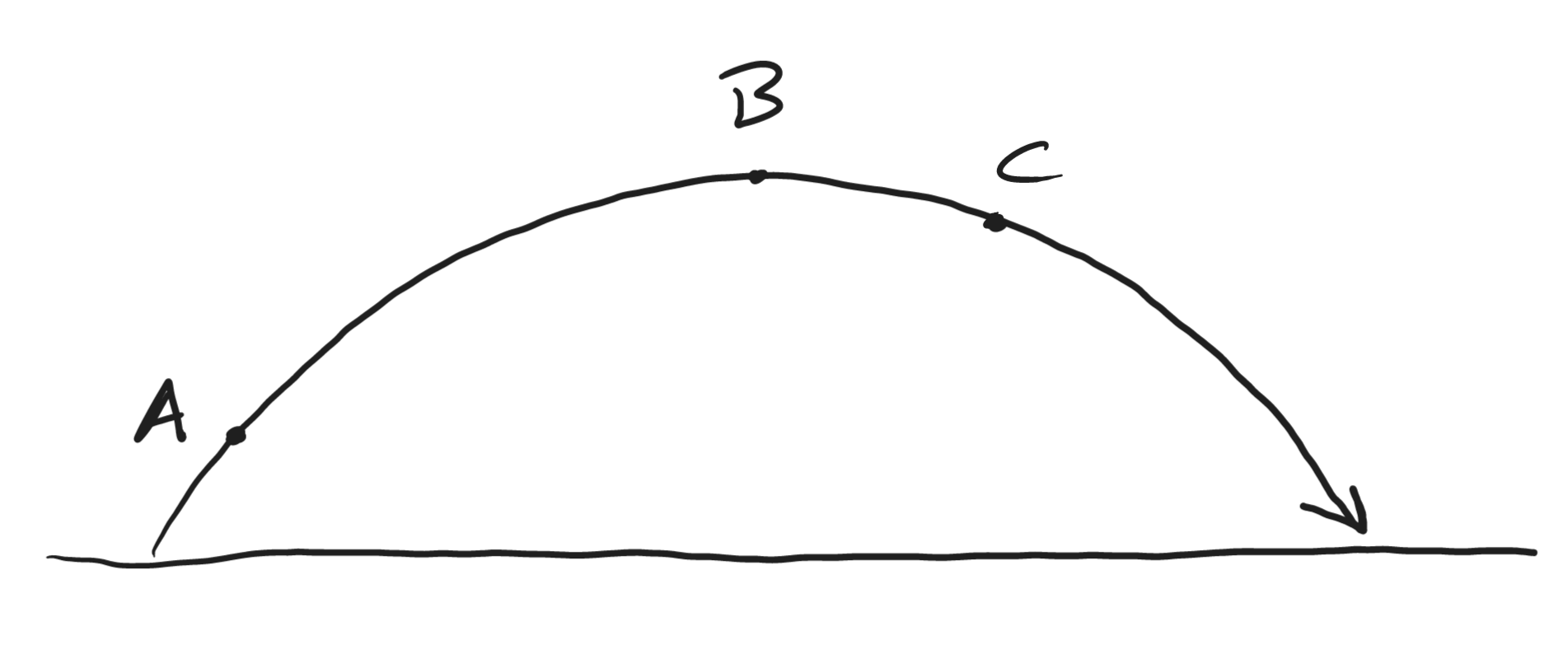 Class 10.5:
Wednesday,
9/27/23
Class 10.5:
Wednesday,
9/27/23Warm Up:
The diagram on the right shows the symmetric trajectory of a free-falling projectile. Sketch the diagram.
1. What does free-falling mean?
2. At each labeled point (A, B, and D) show/label the projectile's overall velocity vector (v), x velocity vector (vx), and y velocity vector (vy).
Today:
- Return retakes -- but some students haven't done the retake, so give them back to me for a while.
- Check/review homework -- focus on Mr. Pennington's multiple choice. For the projectile problems, watch these videos, and if you still have questions, ask them tomorrow -- (new helpful video for #3) (new helpful video for #4)
- B2 -- do you want to go over the river problems that were assigned for class #9 homewor?
- Work time
Homework:
- Mr. Pennington's test problems #1-3 on p.14 of the Unit 2 Packet (PDF) Unit 2 Answer Key
Warm Up: None (so there's time for the retake)
Today:
- Optional test retake
- Work time for those not taking the test -- start on the homework, below.
Homework: See class #9.5, below.
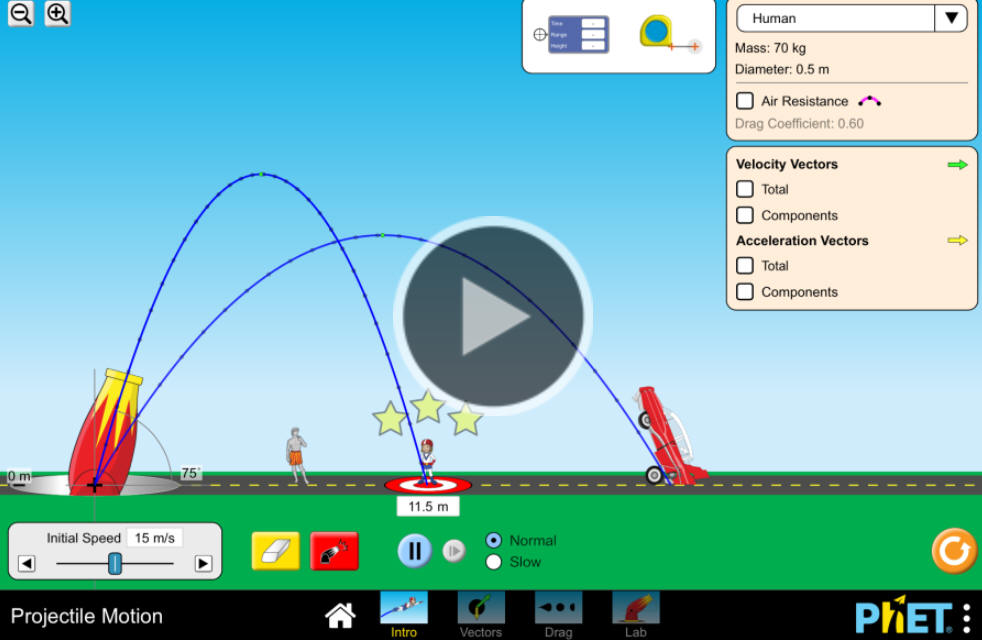 Class
9.5: Monday,
9/25/23
Class
9.5: Monday,
9/25/23Warm Up: Here are a couple of 2-D motion simulations...
What's the ideal angle for launching a projectile, if you want it to travel the greatest horizontal distance? Why is that angle best?
Today:
- Check/review homework
- Unit 2 Packet (PDF)
- Notes -- p. 7 -- deriving the range formula
Homework:
- Nothing is due tomorrow. All of this is due on Wednesday.
- Projectile motion problems #3 (new helpful video for #3) and 4 (new helpful video for #4), on p. 9
- Mr. Pennington's multiple choice questions (p.10-13)
- Unit 2 Answer Key
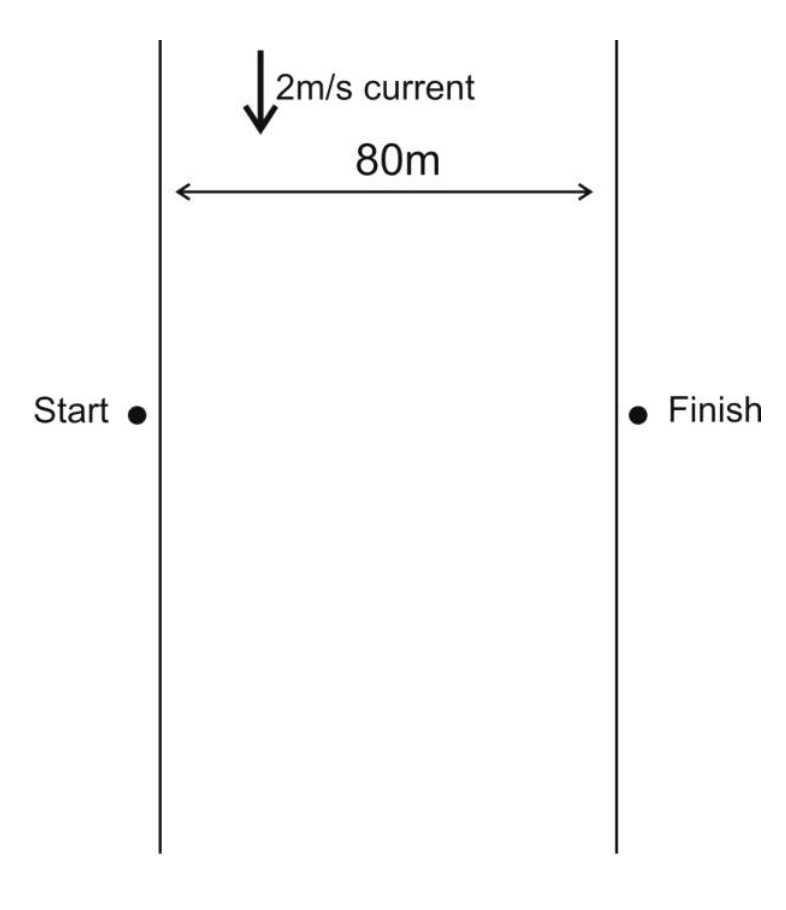 Class
9: Friday,
9/22/23
Class
9: Friday,
9/22/23Warm Up: Let's explore the "classic river problem" using some helpful tables (vector addition and kinematics)! Here's a review of the problem...
An 80m wide river flows due south at a rate of 2m/s. Jane and Bob are on the west bank of the river, and they want to travel to a point on the opposite bank, directly eastward from their starting point. In still water, Jane and Bob can paddle a canoe at a speed of 3m/s. On land, each of them can travel at a rate of 4m/s...
-
Jane's plan is to adjust her heading so that she travels directly eastward across the the river, in a straight line to the destination.
-
Bob's plan is to head due east and accept the fact that the current will carry him downstream. When he gets to the opposite bank he will travel on land back upstream to the destination.
Whose plan will get them there fastest?
Today:
- A5/6 -- Check/review homework
- If you're planning to retake the test on Tuesday, don't forget that review videos are available -- and that you can see me during FLEX -- and that you can email with questions.
- Unit 2 Packet (PDF)
- Today's Lesson -- solving example problems:
- Solve an orthogonal river problem -- #4 on p. 5
- Solve some projectile motion problems
- "Symmetric" problem
- "half symmetric" problem
Homework:
- Both classes: projectile motion problems #1 and 2 on p. 8.
- River problems:
- A5/6: Complete #5 on p. 5.
- A7/8: Complete #2, 3, and 5 on p.5
- Unit 2 Answer Key
Warm Up:
Sketch a head-to-tail diagram for each of the following. Two "component" vectors should add up to the "resultant." The trickiest part is identifying the resultant.
2. A river's 3mph current flows in a direction 15
degrees West of North. A swimmer, whose speed in s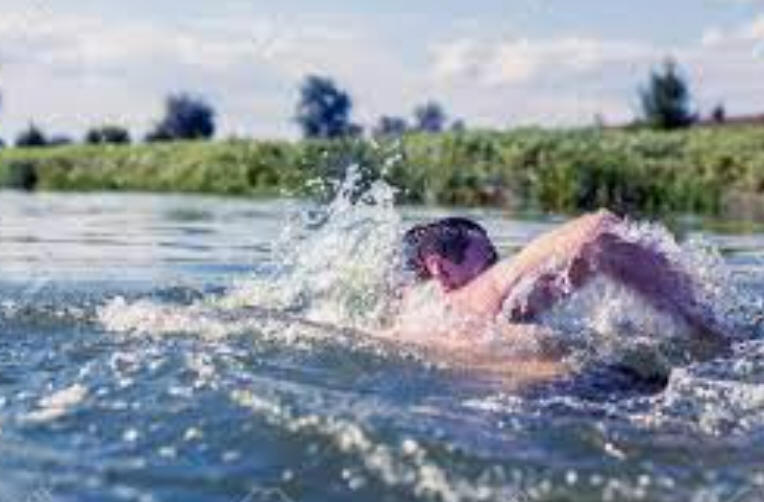 till
water is 2m/s, swims across the river with a heading 35 degrees South of
West. What is the swimmer's velocity, relative to the Earth?
till
water is 2m/s, swims across the river with a heading 35 degrees South of
West. What is the swimmer's velocity, relative to the Earth?
3. A superhero steward on an airplane is traveling in a direction 10 degrees East of South, and their speed is 580mph. The plane's velocity is 460mph in a direction 5 degrees West of South. What is the steward's heading and their "speed on a still plane?"
Sketches and answers: --- I got rid of number 1. Just ignore solution #1.
Today:
- General cell phone reminder
- Check/review homework
- How to solve "river problems." Do some examples.
Here's an old video that might be helpful (VIDEO)
-- I'll try to replace it with a new one -- Here's a
new one
-- it's not super-fantastic, but it's okay..
- Orthogonal River Problems
Homework:
- A5/6 Only: Complete #2 amd 3 -- Change the river's current to 2.5m/s on p. 5. Unit 2 Answer Key
- A7/8: No homework :-(
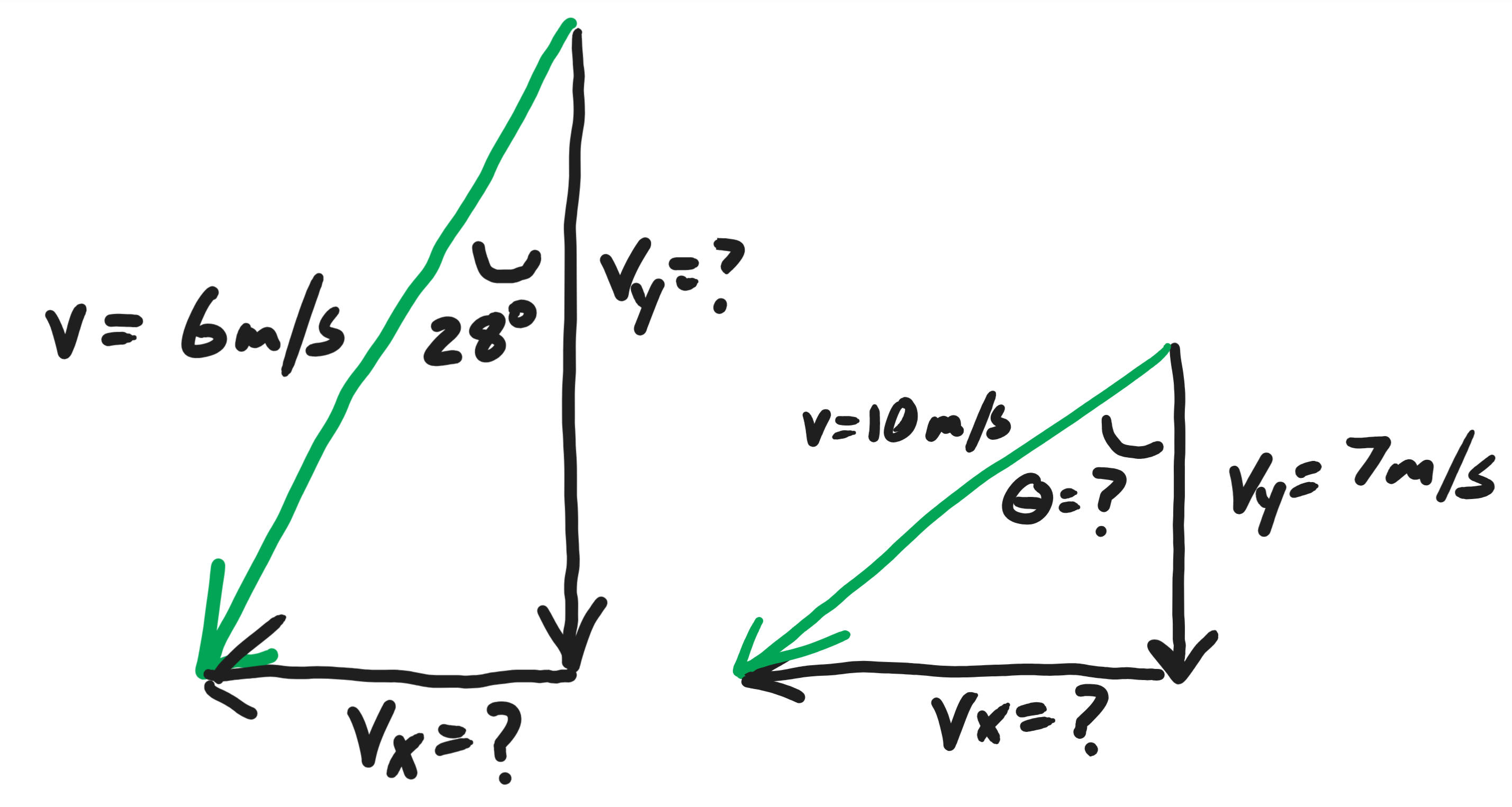 Class
8: Wednesday,
9/20/23
Class
8: Wednesday,
9/20/23Warm Up:
1. Find the missing values of Vx, Vy, and theta.
2. In the diagram on the right, should Vy be -7m/s, instead of 7m/s?
Today:
- In case you're curious... Mathematical (spreadsheet) model of the pendulum warmup from class #6
- A7/8 -- see if we can quickly model alternative interpretations of the bonus question. Solution
- Notes and Practice:
- Begin notes on vectors. Unit 2 Packet (PDF), p. 1-3. Unit 2 Answer Key Old VIDEO.
- Do an orthogonal "river problem" for practice.
- Work time
Homework:
- Finish the rest of the vector addition problems on page3 of the packet. Unit 2 Answer Key
- Complete the Classic River Problem (p. 4). Don't look at the answer!
Warm Up:
1. Suppose the two vectors on the right represent two forces acting on the clam. In what direction will the clam accelerate? How will that acceleration compare to the accelerations we would observe if each force were acting alone?
2. The diagram on the right shows a top view of a train car that is moving at a rate of 2m/s. You are in the car. In which direction and how fast should you walk in order to have the intended velocity shown on the right.
Today:
Homework:
- None
- Optional -- if your trigonometry knowledge is rusty or nonexistant, self-teach about using SohCahToa and inverse functions. There should be plenty of online resources.
- Optional test retake next Tuesday.
Warm Up: None
Today:
- Test
Homework: None
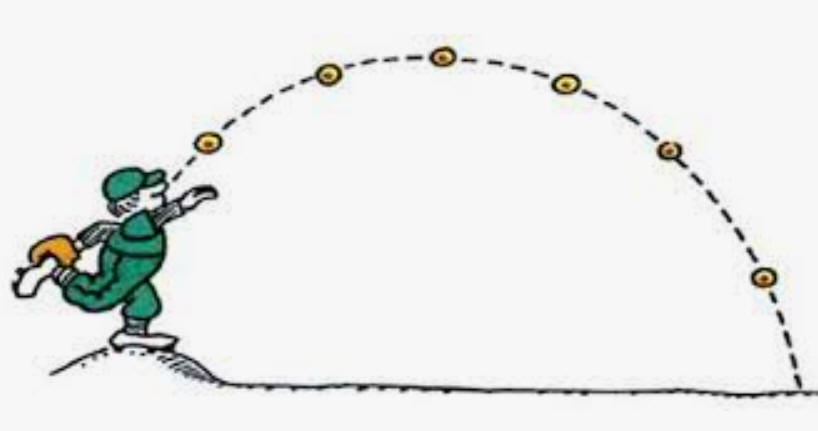 Class
6.5: Friday,
9/15/23
Class
6.5: Friday,
9/15/23Warm Up: Velocity and Acceleration Combinations Practice Quiz. Use this link to take the quiz.
Today:
- Check/review homework.
- Test review -- What do we need to work on? What are your questions?
Homework:
- Study/practice for the test.
-
Extra Unit 1 Practice (optional!)
- New questions and problems
- Extra Unit 1 Test Practice -- Questions and problems
- Extra Unit 1 Test Practice -- Answer Key The answer to #5 on the first section was wrong. It should be correct now (if it's highlighted in yellow). Solution to Extended Kinematics Problem
- Optional -- Here is some more
practice creating graphs for events. These are harder than
what you will encounter on the test.
- Blank PDF Handout -- "Extra Graphing Practice"
- Solutions(**On my graph of position vs time for the soccer ball kick, my graph should really have started and ended at the same position.)
- Video of me working through these and creating solutions
- Optional -- More practice with simple (one formula required) kinematics problems. Make your own copy and expand column D to see the answers.
- New questions and problems
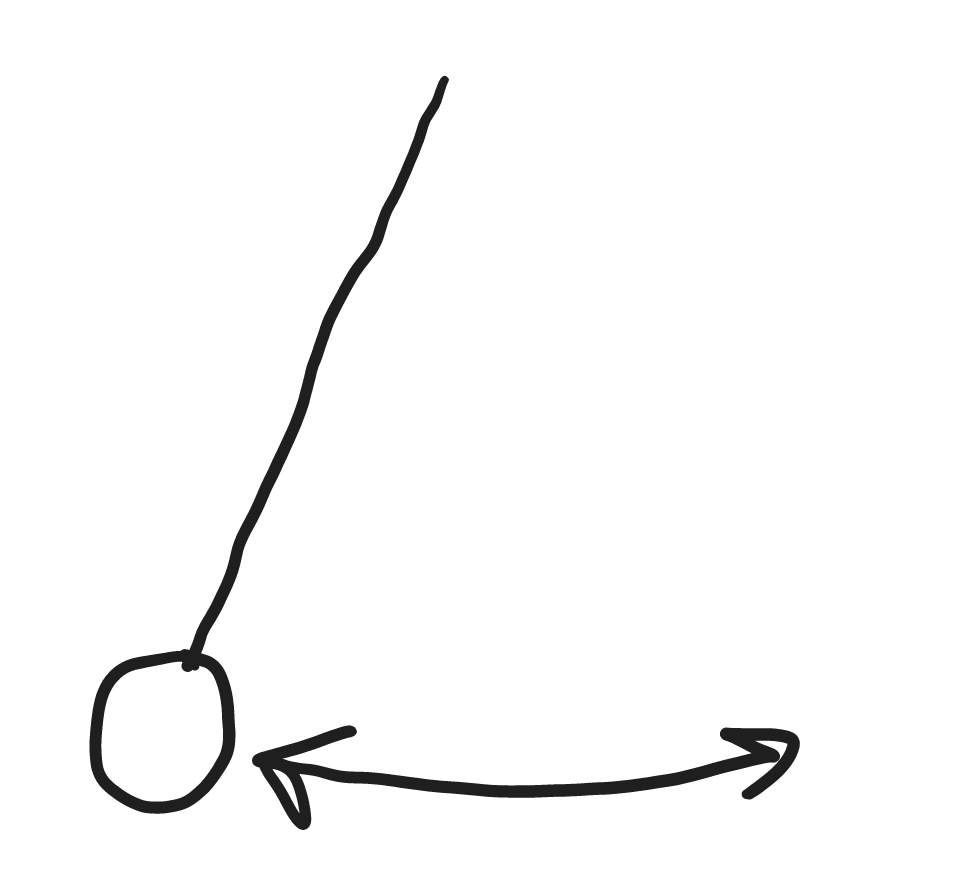 Class
6: Thursday,
9/14/23
Class
6: Thursday,
9/14/23Warm Up: Consider the X dimension motion of a pendulum that is continually swinging back and forth (left to right and back).
1. Draw quick sketches of velocity and acceleration graphs for a time period beginning at the leftmost point in the swing and continuing through one full cycle (over to the right and back). For the acceleration graph, the only expectation is that the sign (+,-, or 0) is correct at any given moment.
2. Identify points in its motion where it demonstrates some of the "9 types of motion." Which types of motion does it not demonstrate?
Today:
- Wrap up the ramp and car activity with one event that demonstrates 7 of the 9 types of motion.
- Check/review homework.
- Go over the format of Monday's test:
- 2 short answer describing one of the 9 types of motion
- 5 multiple choice exploring the relationships between speed, velocity, and acceleration in several situations, including free-fall
- 4 multiple choice matching graphs of position, velocity, and/or acceleration
- 1 short answer drawing a graph of acceleration for some event (and a grading emphasis on the acceleration having the correct sign [+,-, or 0] at each moment in time.)
- 4 multiple choice exploring the relationships between velocity, speed, displacement, and distance
- 1 unit dimensional analaysis (unit conversion) problem
- 4 kinematics problems (some relating to free-fall) requiring a variety of formulas
- 1 extended kinematics problem with 5 parts (requiring a variety of formulas) and 2 intervals of differing acceleration.
- Work time -- Work on p.26 of the practice test -- we should have time to go over this together
Homework:
- If we didn't finish the practice test in class, finish it.
Unit 1
Packet (PDF)
(Answer Key
)
- Video Help part 1 (through #3)
- Video Help part 2 (This isn't exactly like the current version. I plan to replace this video.)
- Review the packet and the test format above, and write down any questions that you want to ask in class tomorrow. Look back at the problems or questions that you circled on your homework assignments, and decide whether you now understand the important concept(s) that are involved in those questions.
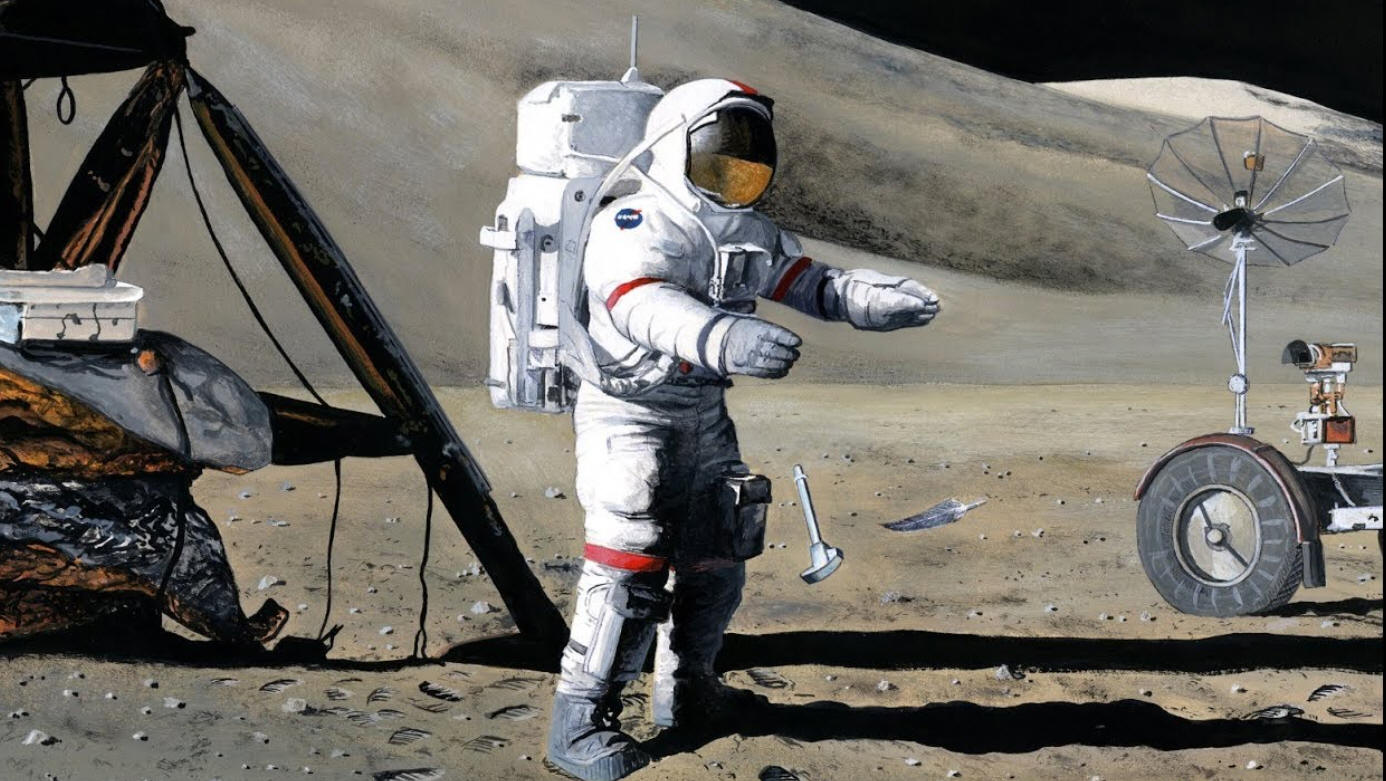 Class
5.5: Wednesday,
9/13/23
Class
5.5: Wednesday,
9/13/23Warm Up: On Moon A, free-fall acceleration has 1/6 the magnitude of free-fall acceleration on Planet B. If an object is thrown vertically upward on Moon A, how will its vertical distance traveled compare with the vertical distance it would travel on Planet B?
This is a common type of physics problem. In this type of problem, you're given a proportional change in some independent variable (e.g. "if we double the object's acceleration"), and you're asked to find the proportional change in some dependent variable (e.g. "by what factor will the object's displacement be multiplied?").
1. What's a good strategy for this type of problem?
2. What's the answer to this one?
Higher resolution drop of feather and bowling ball
Today:
- Check/review homework.
- Work time
Homework:
- Complete the first two pages (23 and 24) of the practice test at the end of
the packet (Answer Key
)
- Video Help part 1 (through #3)
- Video Help part 2 (This isn't exactly like the current version. I plan to replace this video.)
- Optional -- Kinematics formulas Quizlet -- to help you memorize the basic kinematics formulas
 Class
5: Tuesday,
9/12/23
Class
5: Tuesday,
9/12/23Warm Up:
1. Suppose students enter our school at a rate of 54 pounds/sec (pounds of student). After they enter, they lie down, head-to-toe, forming a line whose length is the sum of their heights. Since an average 16 year old student's weight:height ratio is about 2.07 lb/in (and assuming these are all average students with that ratio), how many days will it take them to form a line 3 miles long? Video
2. How does dimensional analysis work? On what basic mathematical premise is it based?
3. This problem (#1) is fine for dimensional analysis practice, but it's not actually solvable given the information provided. Explain.
Today:
- Check/review homework.
- A5/6 -- finish the notes on areas under curves
- Work on an extended problem together.
- Finish the activity in Google Classroom. Test your responses.
- Work time
Homework:
- Finish the extended problem on p. 22. Answer Key . Video Explanation
- Optional (won't go into PowerSchool), if you want to brush up on your dimensional analysis skills -- Unit Conversions Practice
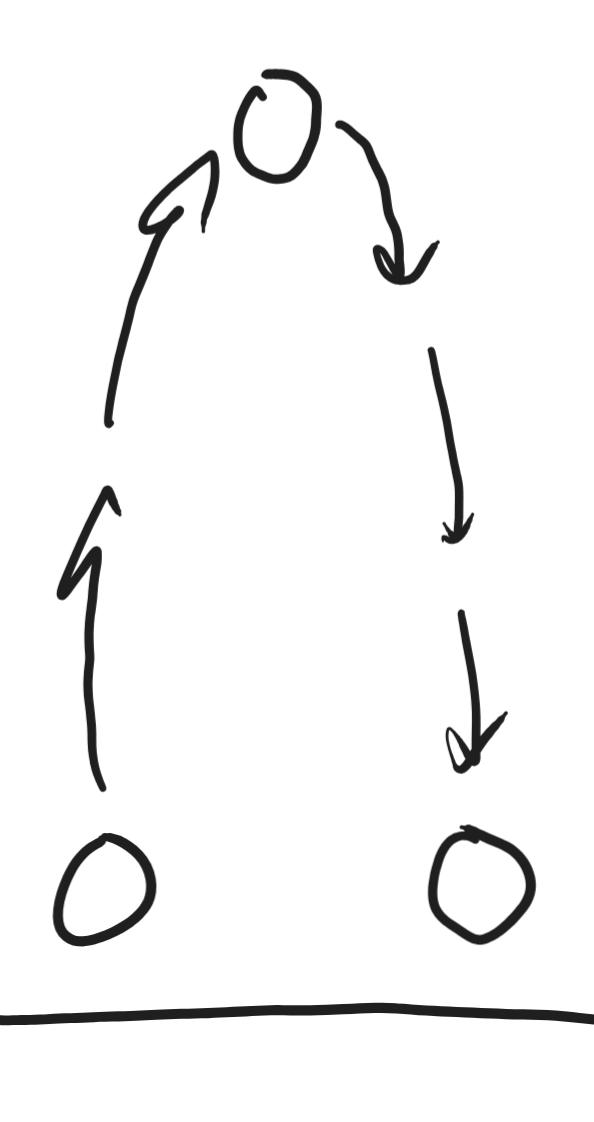 Class
4.5: Monday,
9/11/23
Class
4.5: Monday,
9/11/23Warm Up: Consider the case of this ball. At t = 0s, the ball is free-falling directly upward at a height o 10m, with a speed of 20m/s. Sketch graphs of the ball's position, velocity, and acceleration (vs. time) over the next 4 seconds. [For simplicity, use g =10m/s2 instead of g = 9.8m/s2]
Today:
- Check/review homework
Homework:
- Complete the problems section of Mr. Pennington's Old 1-D Kinematics Test (Packet pages 20). Answer Key . If you have questions, watch this Video for Help with the Problems
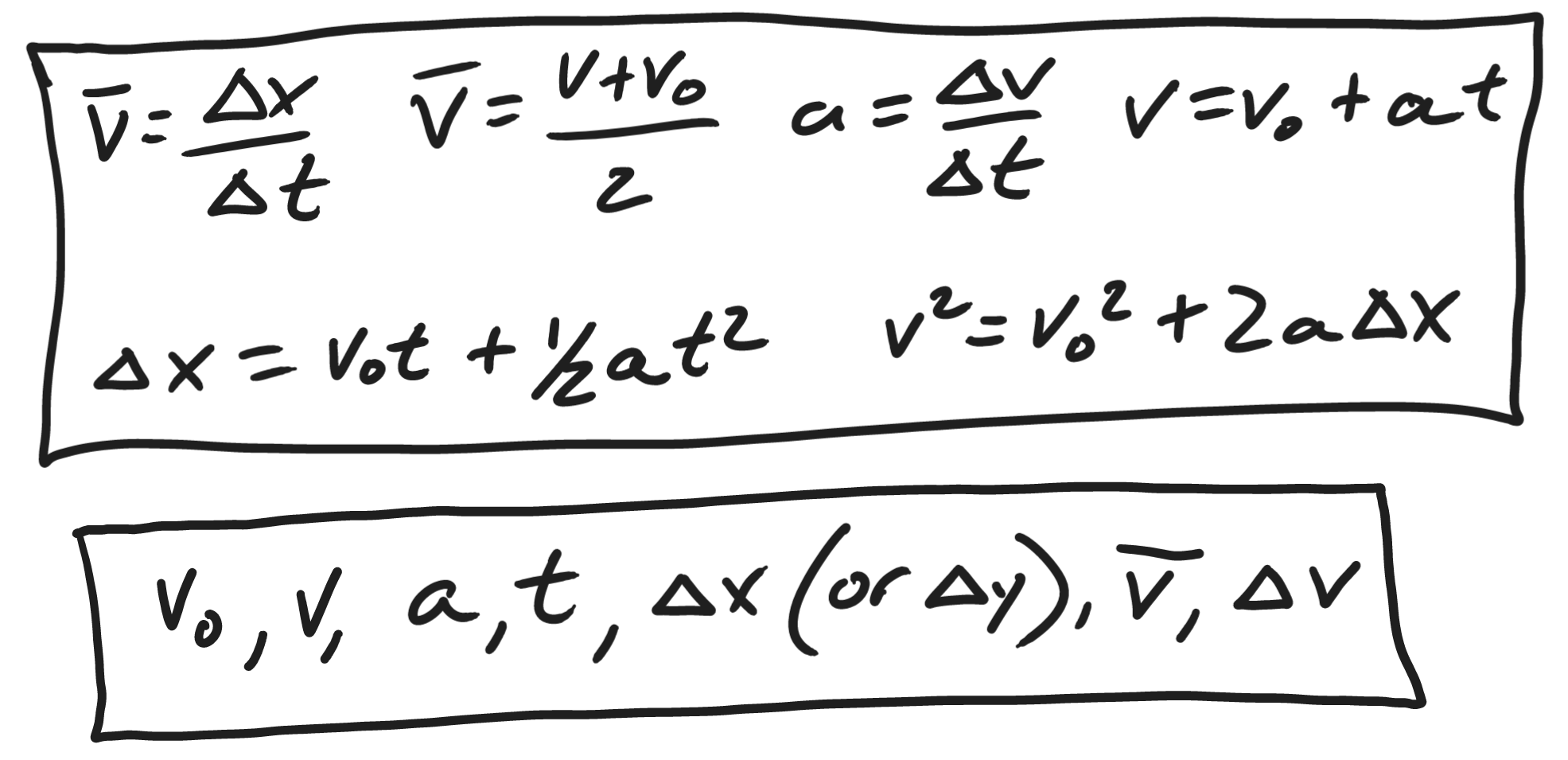 Class
4: Friday,
9/8/23
Class
4: Friday,
9/8/23Warm Up: When you're preparing for a test, it is important to understand the scope of what you are expected to be able to do. For your first physics test, the scope of kinematics problems is defined by the variables and formulas on the right*.
1. Use some of the variables to create a physics problem that you could use to test yourself in preparation for the real test.
2. Can you anticipate how I might go about writing several problems for the test?
*There are a few "formulas" that I did not list, because you are
expected to internalize them --
![]() for
instance.
for
instance.
Today:
- Hobbies/Interests of students in Physics 200.
- Check/review homework
- Notes: Free-fall and areas under curves (packet p 15-16) Filled-In Version Video from Today's Class
- In groups, work on the Velocity and Acceleration Combinations Activity in Google Classroom. Only one student is expected to turn it in (in Google Classroom), but all names should be included.
- If there's time, start on the homework.
Homework:
- Complete the rest of the multiple choice on Mr. Pennington's Old 1-D Kinematics Test (Packet pages 17-19). Answer Key. If you have questions, watch this Video for Help
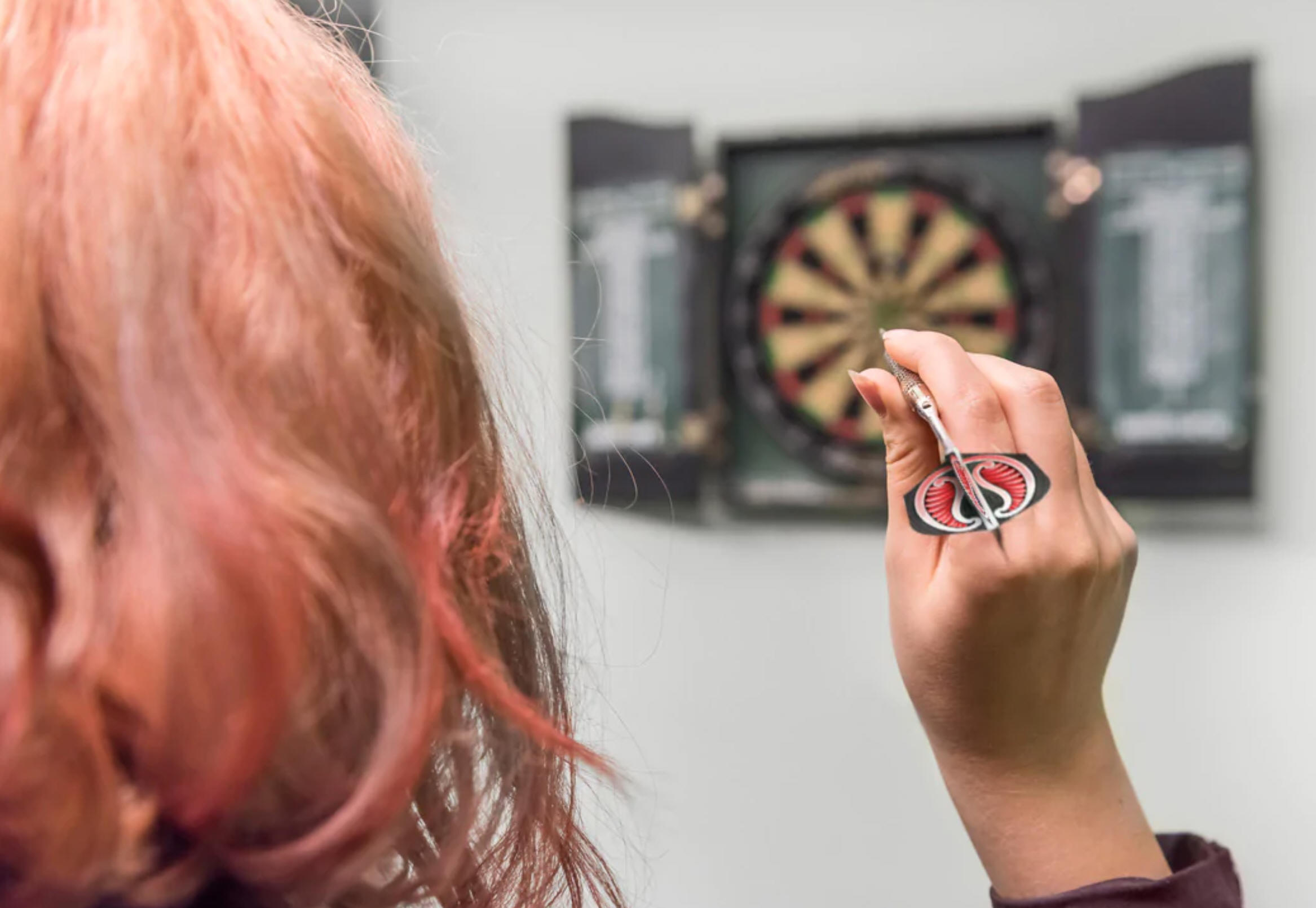 Class
3.5: Thursday,
9/7/23
Class
3.5: Thursday,
9/7/23Warm Up:
Suppose a dart, starting from rest, is thrown from left to right across a room, finally embedding in a dart board. Sketch a graph of the dart's x acceleration (horizontal acceleration only) from the time it begins to move to the time at which it stops.
Today:
- Check/review homework
- Finish the group activity: work on modeling the 9 types of motion. The assginment is in Google Classroom. This is NOT homework. We can finish it later in class.
Homework:
- Complete Multiple Choice 1-12 from Mr. Pennington's Old 1-D Kinematics Test (Packet pages 16-17). Answer Key If you have questions, watch this Video for Help
 Class
3: Wednesday,
9/6/23
Class
3: Wednesday,
9/6/23Warm Up: Mr. Chase once said that there are 9 types of motion...
1. For letter a, on the right, describe what an object could be doing in order to have both positive velocity and positive acceleration.
2. Do the same for the rest of the letters.
Today:
- Enter attendance
- Check/review homework
- Quickly take care of some of this (I've been procrastinating)...
- Online Textbook:
- Kinematics formulas: derivations and use in problem-solving (Video from class)
- One more derivation... V2 = Vo2 + 2a*displacement
- Small copies of the formulas
- Group activity: work on modeling the 9 types of motion. The assginment is in Google Classroom. This is NOT homework. We can finish it later in class.
Homework:
- Finish the problems on p. 12 and 13 of the Unit 1 Packet (PDF) Answer Key
Warm Up:
Match each position vs. time graph with the correct velocity and acceleration graph.Today:
- Enter attendance
- Check/review homework
- Take care of some of this...
- Online Textbook:
- Intro to kinematics formulas. Video -- Intro To Kinematics Formulas
- Start using the formulas next class.
- Work time
Links:
Homework:
- Complete the graphs on page 9. Graph Comparisons solutions Video Solutions
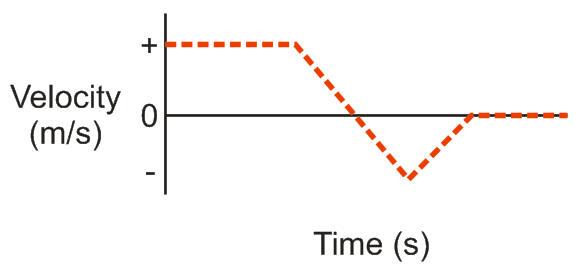 Class
2: Friday,
9/1/23
Class
2: Friday,
9/1/23Warm Up:
1. Use the velocity vs time graph on the right to sketch a corresponding position vs time graph. [Assume that motion away from the sensor is positive, and motion toward the sensor is negative.]
2. Where in the graphs is there acceleration (any change in velocity)?
Today:
- Enter attendance
- Check/review homework
-
Take care of some of this...
- My info
- Class goals
- Slideshow -- photos I've taken in the last year
- My info
- Online Textbook:
- Complete
Acceleration Notes (p.6-7)--
Answer Key
Old Video--
start at 12:50
- Do some graphs together.
- Finish for homework
Links:
Homework:
- Complete graph comparisons on page 8 of the packet. Graph Comparisons solutions Video Solutions
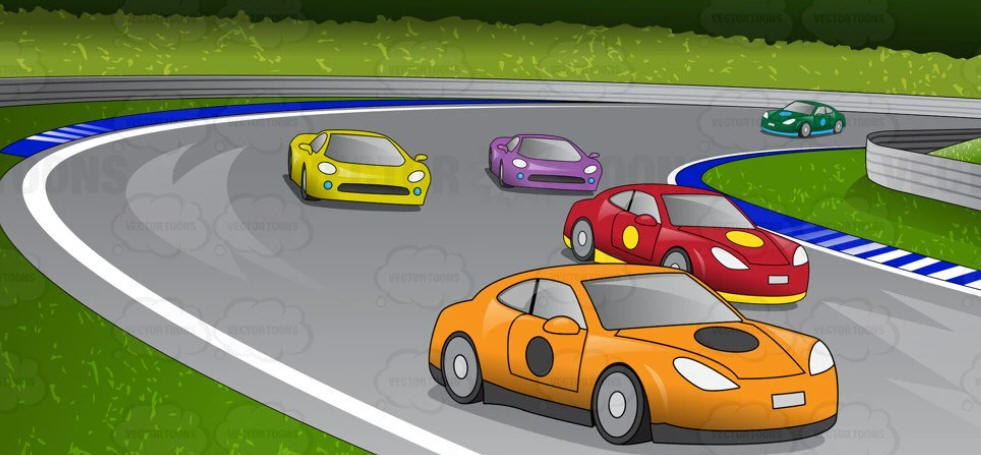 Class 1.5:
Thursday,
8/31/23
Class 1.5:
Thursday,
8/31/23Warm Up: Suppose you're involved in a 2 lap race. If you want your overall average speed to be twice as fast as your speed for the first lap, how much faster do you have to go during the 2nd lap? [To calculate average speed you can use rate = distance / time] Solution -- don't peek!
Today:
- Enter attendance
- Check/review homework (if we didn't finish in class)
- Notes -- Kinematics in 1-D -- pages 1-4 of the packet. Video from today's class. Answer Key
- If there's time (there probably won't be)...
- Student info sheet (PDF)
- Course expectations -- see if we missed anything
- My info
- Class goals
- Slideshow -- photos I've taken in the last year
- Online Textbook:
- **
Links:
Homework:
- Complete page 4 of the packet. Answer Key
Physics 200: Mr. Stapleton
Warm Up:
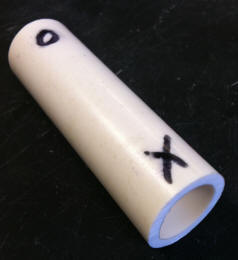 Spin
one of the "sprotating cylinders" by pressing one end until it squirts
out from under your finger. Try pressing the other end.
Spin
one of the "sprotating cylinders" by pressing one end until it squirts
out from under your finger. Try pressing the other end.
When the cylinder is spinning, why do you only see the symbol that you press?
Today:
- Cell phones into the caddy. Brief discussion about phones and the caddy, and how to deal with getting them out at the end of class.
- Enter attendance in first 10 minutes
- Some of you... sign on to a laptop -- Username: guest-ehs Password: guestehs
- Learn names/pronunciations -- fill out seating chart and
- Get the Unit 1 Packet:
- Preview
- of the year (see last year's web page).
- This unit -- skim through the packet -- look at the practice test
- Discuss split block times (link to bell schedule)
- Discuss homework grading.
- Motion Matching Activity -- do the activity and answer the
questions. Work in groups of 2-3 students (no more than 4).
Alternate group members attempting the challenges. The point
is to make sure that you can perform the motions and understand the
graphs.
- Directions: Matching Motion Graphs with motion detector (Web page)
- Questions are on packet page 5.
- Don't forget your phones!
Links:
Online Textbook Reading:
Homework: Finish the questions on page 5 of the packet (assuming that you haven't already finished them).

